The sheer prominence of the compact SUV on British roads tells its own story about how much growth this segment has seen in recent years.
While 20 years ago drivers might have graduated from a family hatchback into a traditional family saloon, and ten years ago into a compact premium five-door or a compact executive four-door, now it’s the downsized 4x4 that’s becoming the preferred route of progression.
Compact SUVs offer such a long list of attractions – practicality and versatility, 4x4 and all-weather capability, premium-brand desirability, affordability, distinctive style, strong performance, impressive comfort and refinement, and often uncompromised handling to go with all that – that they’ve become a default first choice by stealth.
I know plenty of SUV drivers who didn’t realise they were in the market for one until they sat down and thought about it. Having done that, why settle for less? The compact footprint of the average car in this class makes it as easy to manoeuvre and park as any other family-sized option, while so few of the other compromises that can apply when you’re choosing an SUV – weight, fuel economy, cost of insurance – are part of the buying equation here.
Autocar's top 10 compact SUVs 2018
Quite a complex equation that’s looking like all of a sudden too. Audi, BMW and Volkswagen established themselves in the market around a full model life cycle hence with the Audi Q3, BMW X1 and Volkswagen Tiguan respectively, but this year along have come Volvo and DS with their slightly left-field entrants to upset the applecart. Volume brands such as Ford and Mazda are here too, of course.
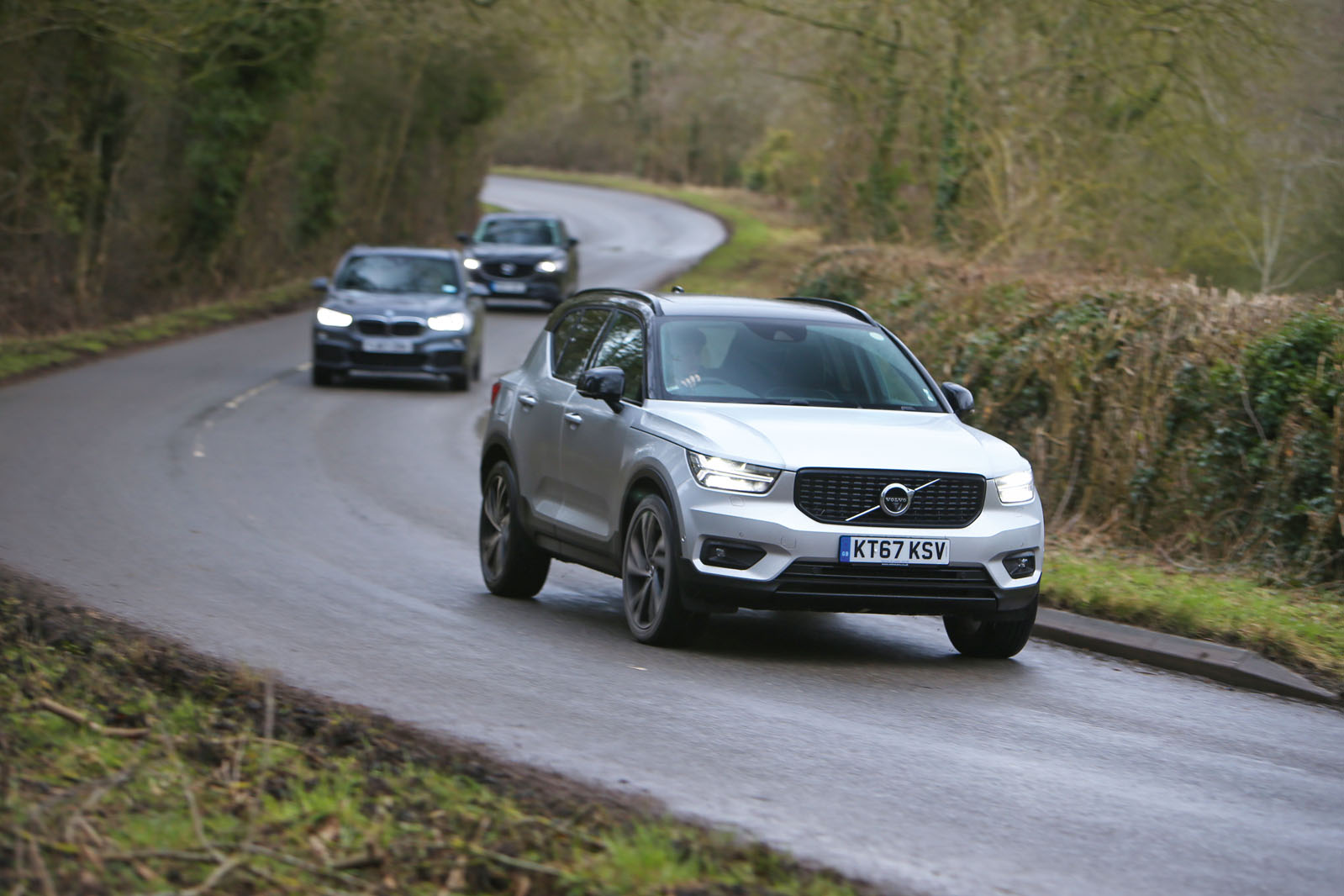
So exactly which downsized 4x4 has the calibre and completeness to dominate its rivals? And should you buy premium-German, premium-alternative – or neither?
Round one: ‘That can’t be a good look for Ingolstadt’
A wet weekday in February might not be the perfect setting for too many Autocar group tests, but it suits this one. Winter motoring in Britain is pretty well represented, after all, by a day on which the rain has set in to stay. The kind of day when it’s been coming down constantly, between heavy flurries and lighter drizzles, and has left enough mud and standing water on the roads that you’re never quite sure how slippery the next bend or junction will be.
Peering though rain-streaked side windows and a windscreen never wiped more slowly than on a quickish intermittent setting, you struggle to see quite as much of the world around you as you’d like. On days like this, as everybody knows, you simply can’t keep a car clean any more than you can keep one dry. Which, by the way, is also the nearest thing to an apology you’ll be getting over the next couple of thousand words for the mucky state of the cars in these photographs.
In these conditions, you need a refuge: somewhere to warm your hands and dry out your trousers, and that generally makes you feel good about the sorry process of getting around. And a good compact SUV makes a very fine refuge, offering the handling security of two driven axles; an extra few inches of remove from the bump- and-splash of the road surface underneath you; a comfortable, well-equipped, luxurious-feeling cabin with plenty of space and luxury features (seat-heaters set to steam); and a gently reassuring elevated view of the dank greyness outside.
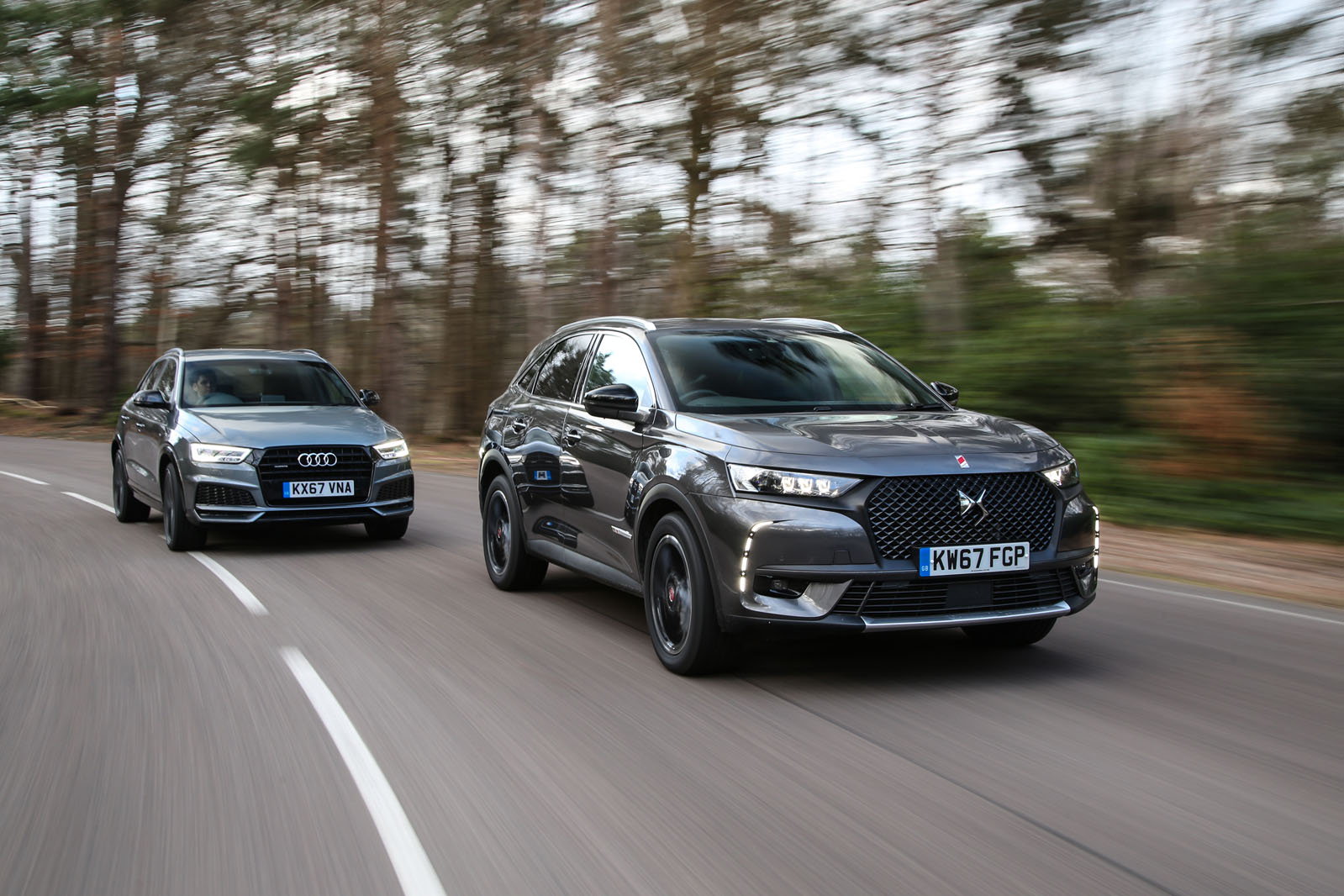
Not that you’re necessarily getting all of those things with every one of the seven rivals we’ve lined up today, mind – or even getting them in identical proportions when you do. We’ve endeavoured to bring you the most interesting test we can here, packed with as many temping new models as possible, and yet it certainly well represents the diverse mix of shapes and sizes of bodies that are available in the compact SUV class.
There is almost a foot between the longest (DS7 Crossback) and shortest (Audi Q3) cars we’ve included, and more than six inches between the loftiest roofline (Ford Kuga) and the lowest (Audi Q3).
Despite our determination to bring cars together at equivalent price levels and with near-as-possible like-for-like power outputs and mechanical layouts, Volkswagen could only provide an example of its Tiguan with a 148bhp 2.0-litre diesel engine, a manual gearbox and 4Motion four-wheel drive, and so it’s at a disadvantage in a field made up mostly of cars with between 170bhp and 190bhp, with automatic gearboxes and with four-wheel drive.
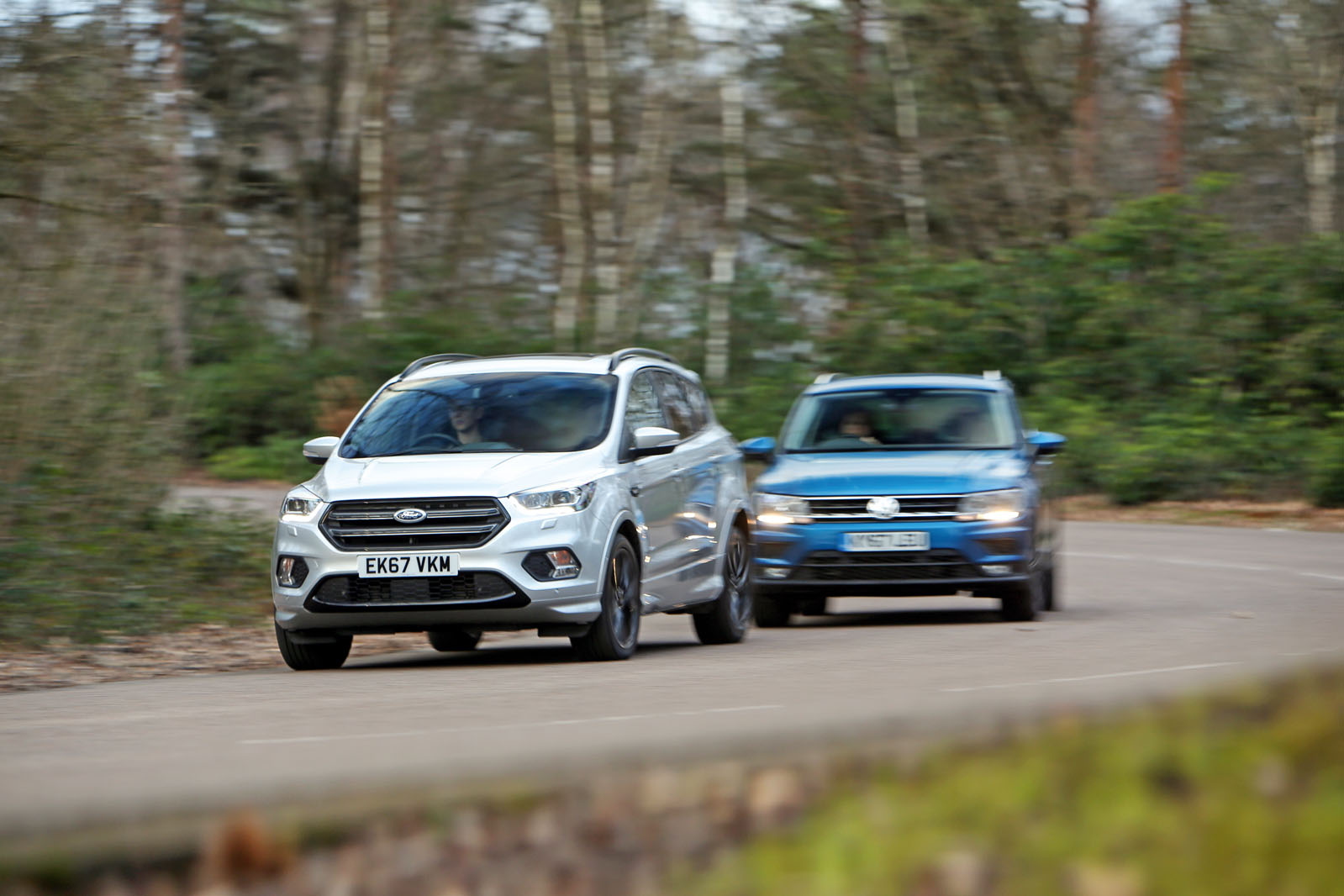
DS won’t offer a four-wheel-drive version of its new DS7 Crossback until the plug-in hybrids appear. Meanwhile, BMW couldn’t provide a perfectly matching X1 xDrive20d but did have a xDrive25d; and, considering the prices being asked by the likes of Volvo for its First Edition XC40s and Audi for its Black Edition Q3s – and the obvious attractions of a 228bhp BMW in among a group of SUVs like this – we gladly included it.
First for a preliminary testing stage to the exercise at hand, then. Before we decide which cars get to go forward and contend for the silverware, everything gets an equal chance to impress. Boots are flung open and peered into; back seats are interrogated and examined for outright space and comfort level; driving environments are weighed up for perceived quality, equipment level, convenience and luxury feel.
Finally, the driving experiences themselves are assessed, with particular attention paid to sure-footed handling stability, ease of use, comfort and refinement – and bonus points awarded, perhaps, where these cars go above and beyond what we expect dynamically of an SUV. And two of our seven rivals put themselves in danger, albeit for different reasons, before the driving even gets under way.
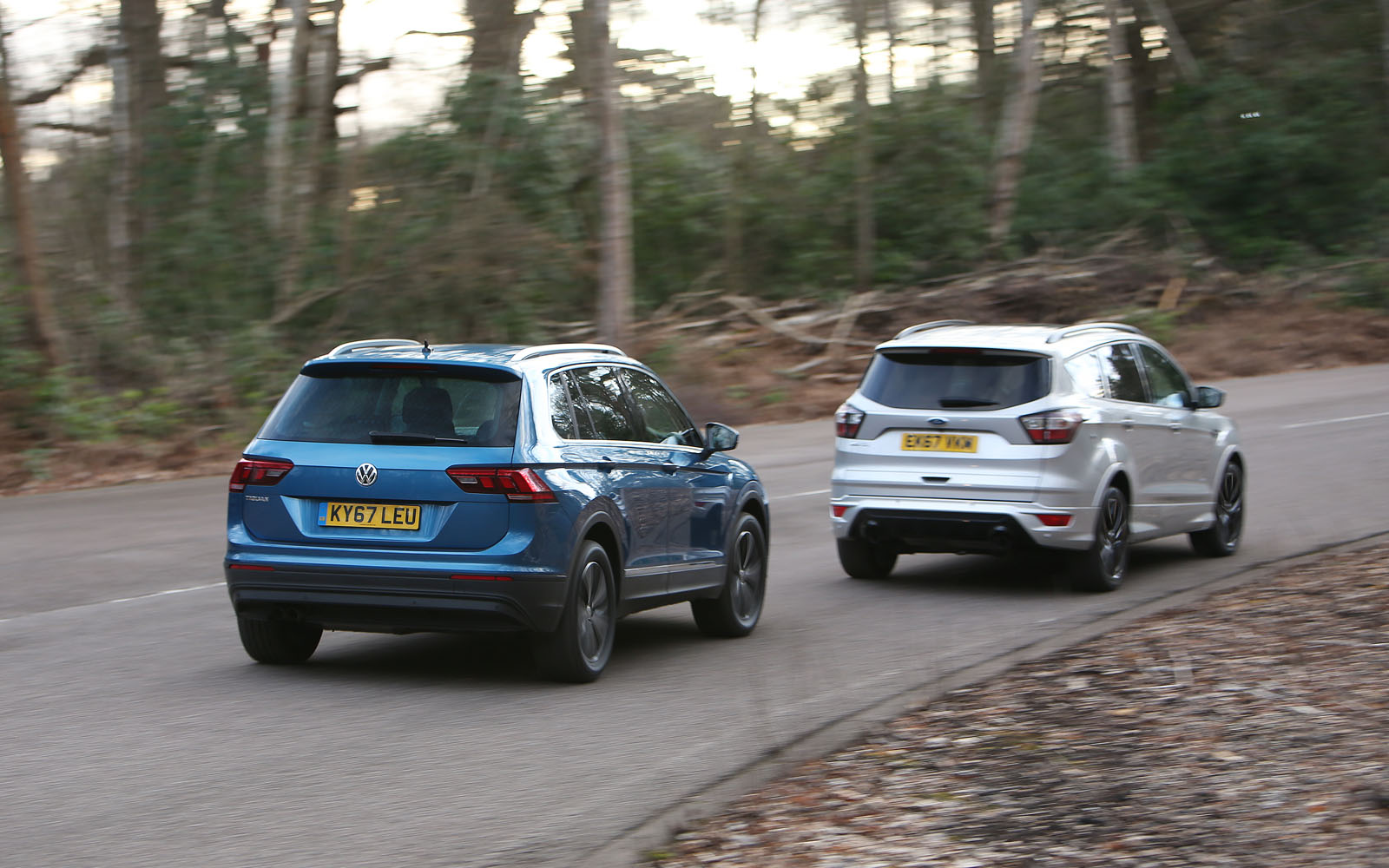
By and large, all of these cars achieve the neat packaging feat of delivering better occupant practicality and boot space than a typical compact family car, without quite taking up proper SUV- level space at the kerb.
All except one of them, whose interior would seem tight, I suspect, even compared with a good modern crossover hatchback like a Seat Ateca or Nissan Qashqai.
It’s the Audi Q3. Up front, you’re less aware of the restrictive occupant space in it – although there’s certainly less head room available, and less potential to adjust your seat upwards to take a loftier view of the road should you want to, than there ought to be. In the back, an adult is forced to sit with their knees splayed around the front seatback, and will likely run short on head room if they’re taller than 6ft 2in. None of these cars, truth be told, is big enough to make a comfortable five-seater, but the Q3 certainly isn’t – and its boot isn’t much bigger than that of a regular five-door hatchback.
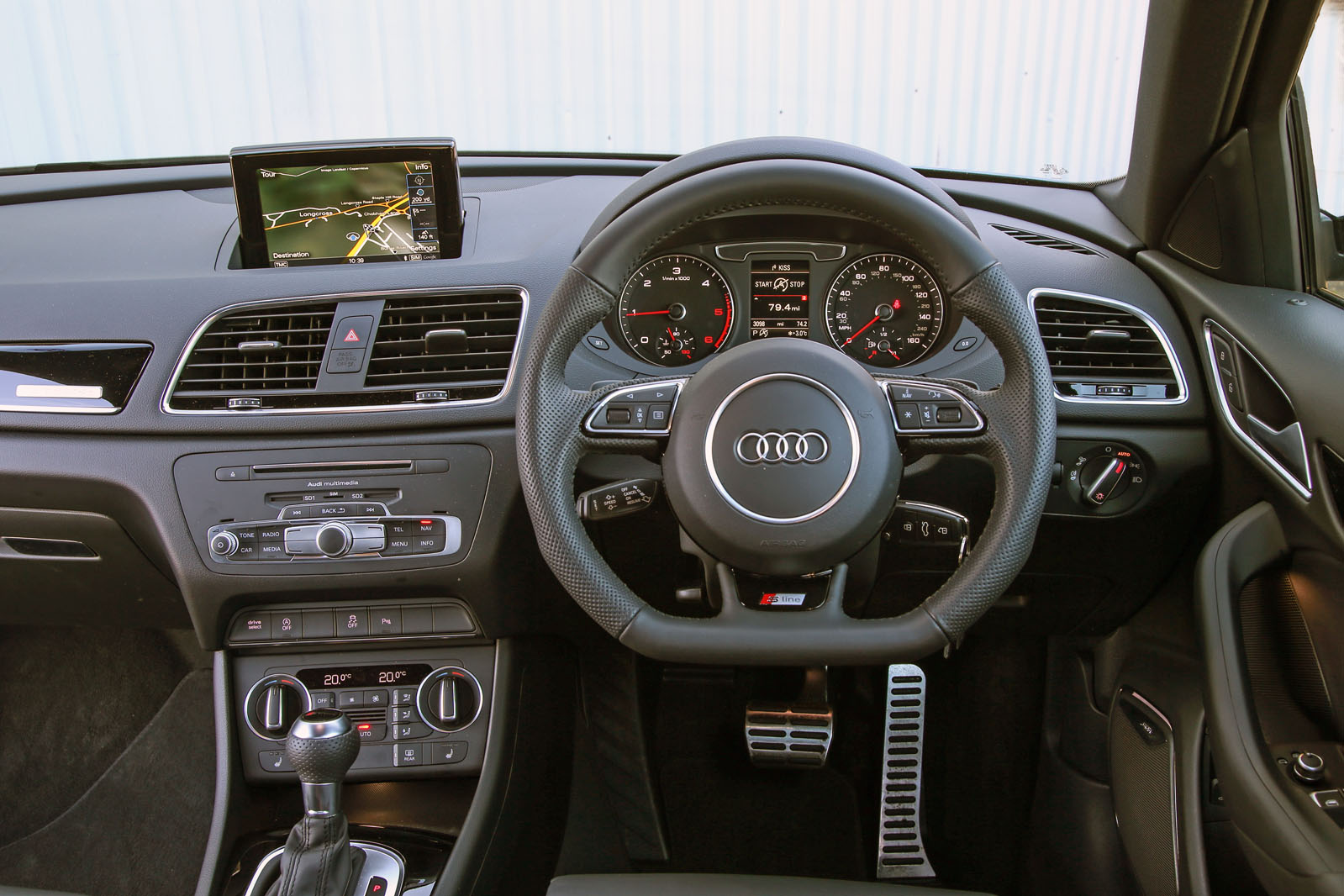
The Audi’s cabin isn’t the best advert for it in other ways, either. While it’s very solidly constructed and well-finished, the Q3’s fascia is showing extremes of age uncharacteristic of an Audi. The car’s trip computer display reminds you of the A4-before-last (the one that got pensioned off as the Seat Exeo), and its heater controls and infotainment console, too, are strangely antiquated. Given how much richer and more sophisticated are the digital instruments and ritzier fittings of an A3 hatchback, I think I’d feel thoroughly short-changed if the Audi salesman upsold me into a Q3. And that can’t be a good look for Ingolstadt.
There is significantly more room to be found in the cabin of a Ford Kuga – not that it would likely convince very many Audi customers to give the ‘lowly’ Ford a passing glance – and so larger adults can get comfortable in the car in either row. But, my word, this isn’t a cabin you’d be too happy to spend a long motorway commute in; not, at least, judging by the standard of materials and finish set by the best cars elsewhere in the group. Dark grey mouldings from pillar to pillar make for a drab, monotone ambience that’s in dire need of enrichment and often feels every bit as ordinary to the touch as it looks.
Quite the reverse is true of the DS7 Crossback’s interior. Packed full to bursting with ‘design flourish’ features such as its oversized pendant- like window switches and its ornate air vents, our Performance Line test car was also upholstered extensively in Alcantara suede. You’d be unlikely to find a richer or more eye-catching cabin in any other sub-£40k car, I reckon.
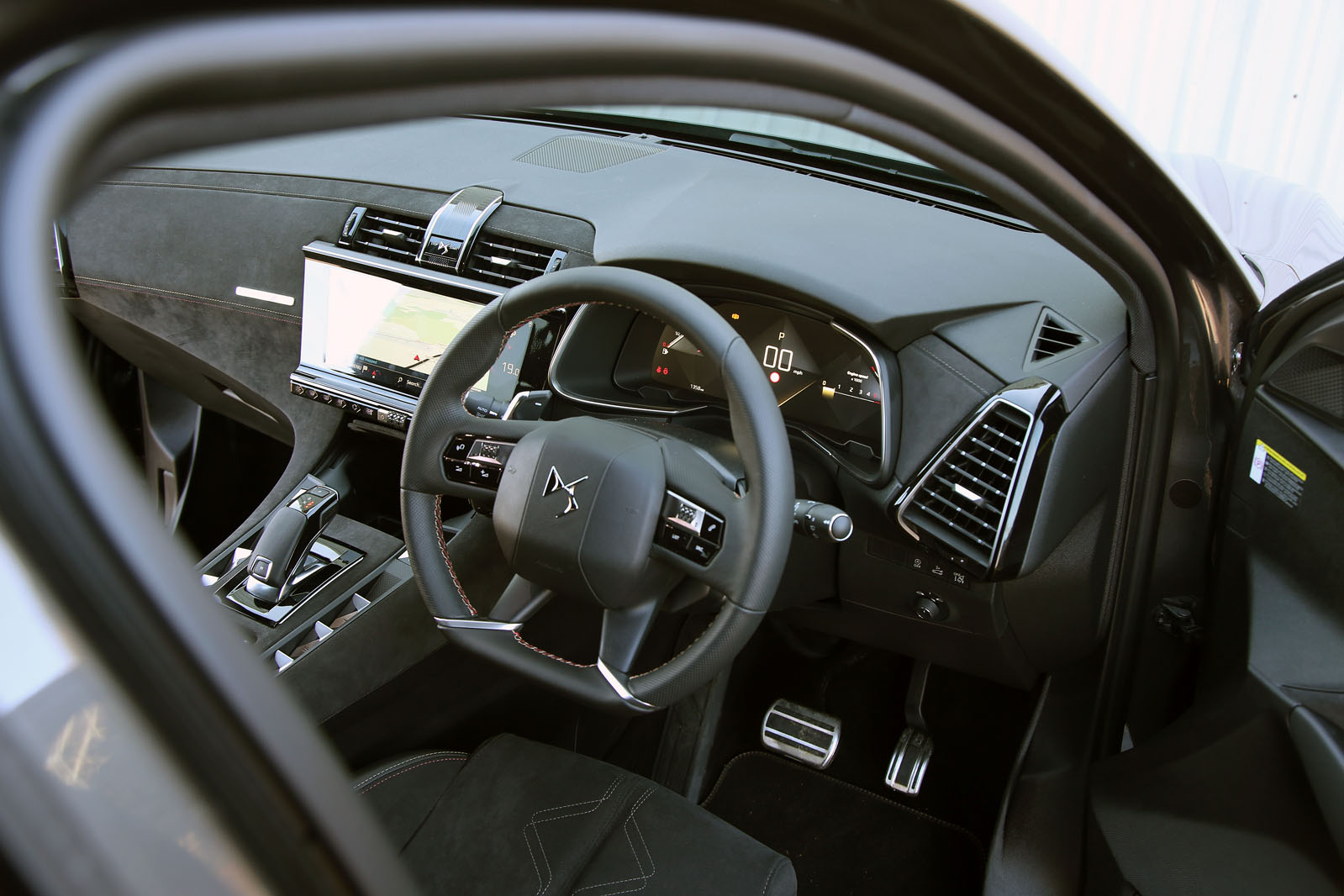
But now try to find the ‘engine start’ button; bet it takes you at least 30 seconds. The car’s digital instruments prioritise eye-catching style over easy legibility, and its infotainment system – while it’s impressive for screen size and display clarity – could be made a lot easier to navigate. The DS7’s interior would plainly rather have your attention, either for the right reasons or the wrong ones, than simply make your life easy.
Which is certainly not a charge you could level at the cabin of the quietly classy, cleverly spacious, intuitively laid-out, understated Tiguan.
And to drive? The Kuga’s handling is predictably keen and its body control atypically taut for a small SUV, but its steering has a disappointingly elastic feel to it and its powertrain is a touch noisy and clunky at times. It must fall first. Next to get swept away is the Q3, which has much better mechanical refinement than the Kuga but also a ride that doesn’t isolate its occupants from lumps and bumps too well (no doubt to do with those two-tone 20in alloys), and handling that doesn’t make a dynamic virtue of its compactness either.
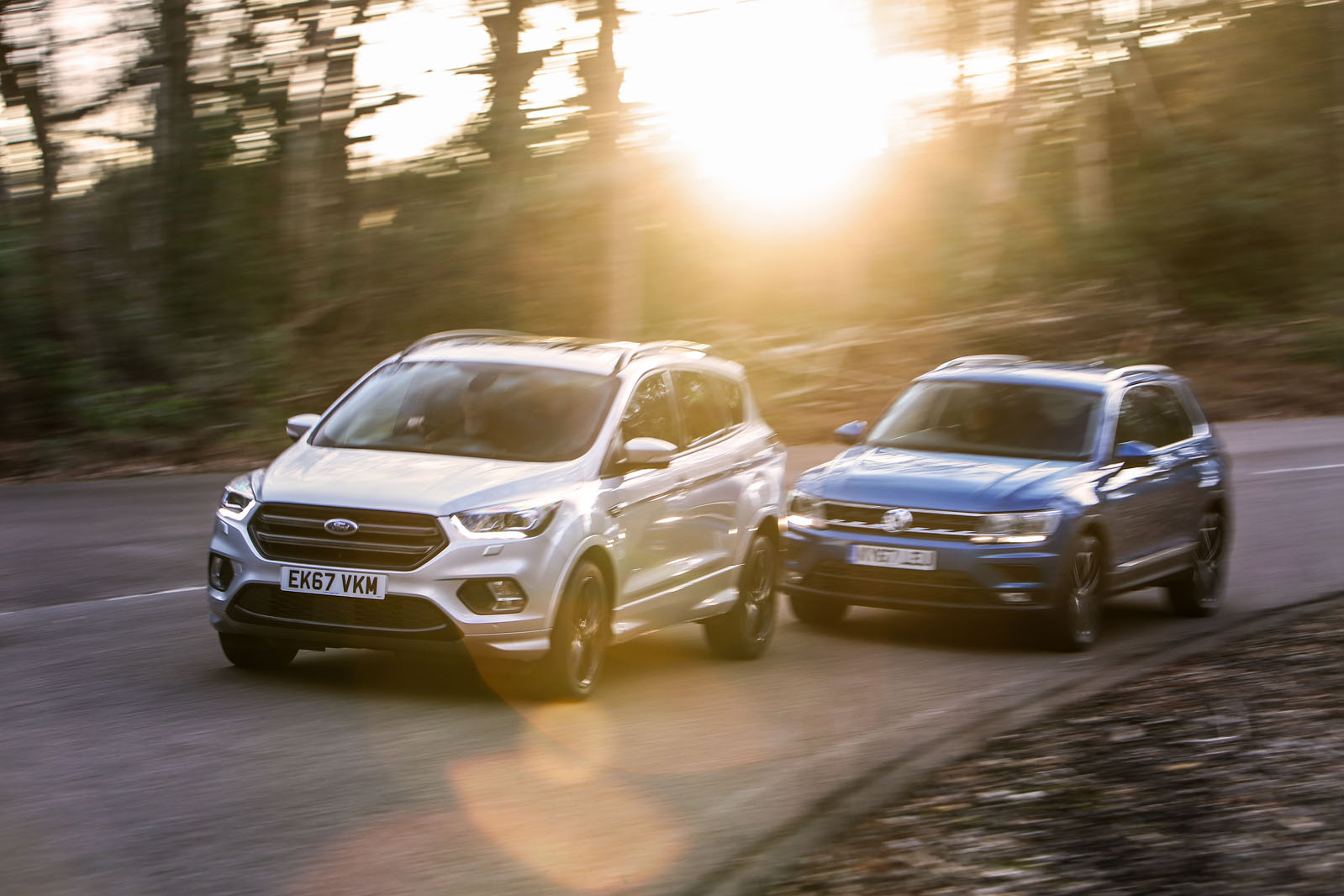
The Tiguan comes closer than the DS7 Crossback to forcing its way into our final three shootout, since its driving experience shows the greater evidence of close developmental polish. Even though our test car was a manual, the Tiguan’s controls were more uniformly weighted, with more linear responses, than the DS7’s; it was an easier car to drive smoothly, and had better rolling refinement. The DS7’s steering lacked helpful weight in some of its driving modes, and both its ride and its automatic gearbox seemed a little bit short on sophistication.
Time to usher the also-rans to one side, then.
It’s an interesting SUV debut from DS, but if they would have worried a bit less about the ‘MyCashmere’ cabin ambience (whatever that is) and a bit more about the attention to detail of the driving experience, the DS7 might have survived to challenge the front runners.
As it is, best-of-the-rest billing goes to the Tiguan – a car that might not have missed the cut itself, I wouldn’t mind betting, in just the right engine, gearbox and optional suspension trim.
7th Ford Kuga 2.0 TDCI 180 Powershift AWD ST-Line X - Fussy looks, an uninviting cabin and a powertrain with rough edges. Chassis has some redeeming qualities
6th Audi Q3 2.0 TDI Quattro S tronic Black Edition - Impractical car with an interior that seems a decade old in places. Refined but bland to drive
5th DS7 Crossback BlueHDI 180 Automatic Performance Line - Plenty of space and quite lavish with it – though styling’s derivative in parts. Should be easier and smoother to drive
4th Volkswagen Tiguan 2.0 TDI 150 4Motion SE Nav - Proves its quality after a penalty start. Spacious, solid and well-thought-out but lacking ride sophistication
Round two: ‘There’s an unmistakable air of SUV-typical invincibility’
Ready for the big finish? Our top-three shootout will be contended by the three compact SUVs we haven’t mentioned yet. And the fact that every one of them has a case to be crowned pick of the bunch does at least help ease a road tester’s troubled conscience, since it suggests their status as finalists is beyond question.
Those particular cases will be made in sufficiently different ways, however, as to make the reasoning of our ultimate recommendation all the more important. Because all three of these cars deliver on their aims; the question is, which vision of the compact SUV is the most convincing, as well as the most convincingly executed?
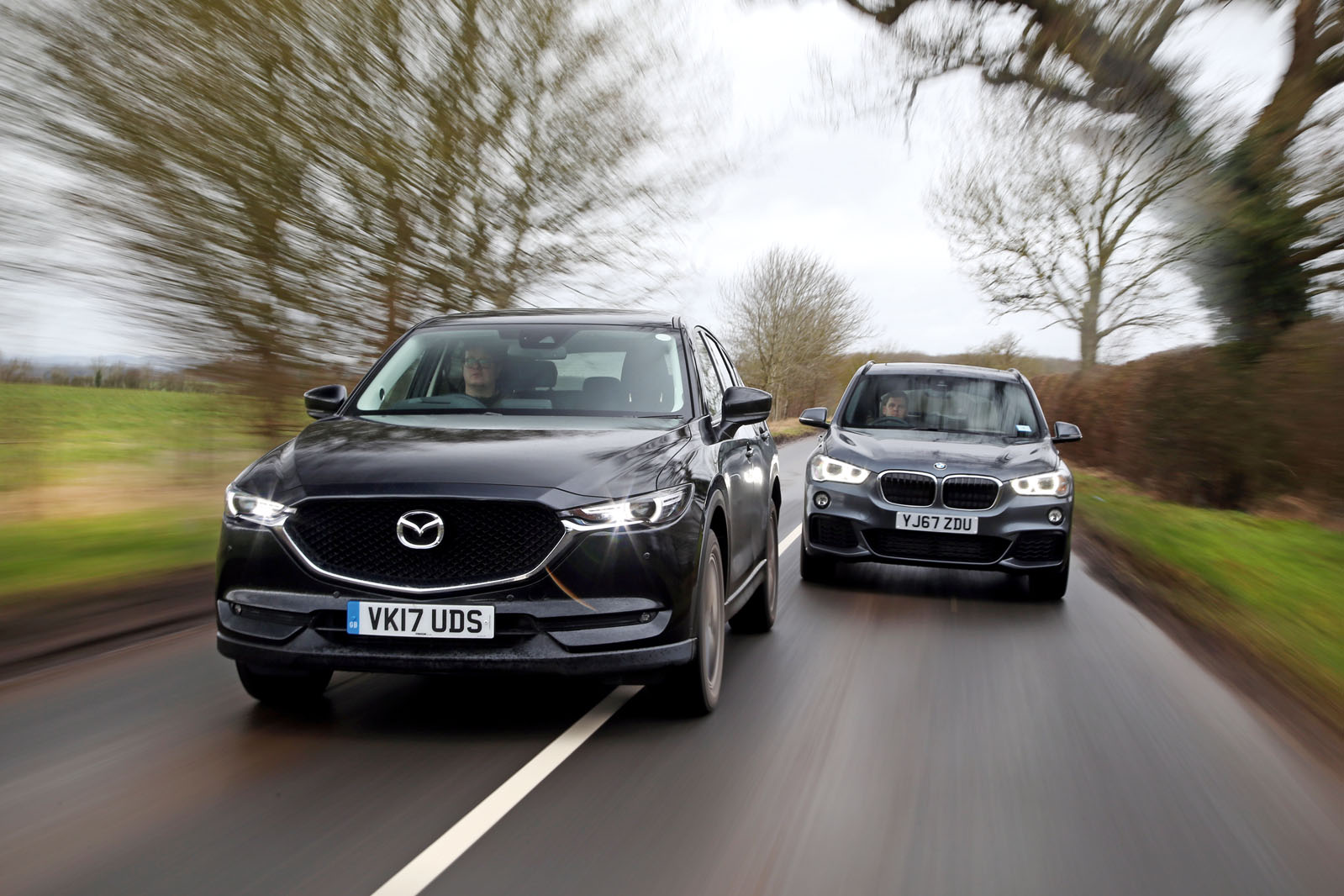
In no particular order, then, let’s introduce our leading characters. First, the well-priced, dynamically adept, plucky all-rounder. ‘The Good Guy’, if you prefer: the Mazda CX-5. It’s tested here in top-of-the-range 2.2-litre diesel four-wheel- drive auto form, and outpunches almost all rivals for torque.
It has the practicality credentials you’d hope for in a really useful family car: four adult- sized seats and a roomy 500-and-something-litre boot. And, as we’ll go on to explain more fully, it has a classily finished cabin and a cleverly tuned blend of drivability, refinement and poise that shrugged off the tail-enders of the field easily, and which also suggest it could sell for much more than the £33k its maker is asking for it.
There probably wouldn’t be very many queuing up to suggest that the Volvo XC40 D4 AWD First Edition could sell for much more than its maker is currently asking for it. But that’s a common theme with these fully loaded introductory special editions and it’s as well to remember that most examples of this car will be sold for a figure much closer to the asking price of the Mazda.
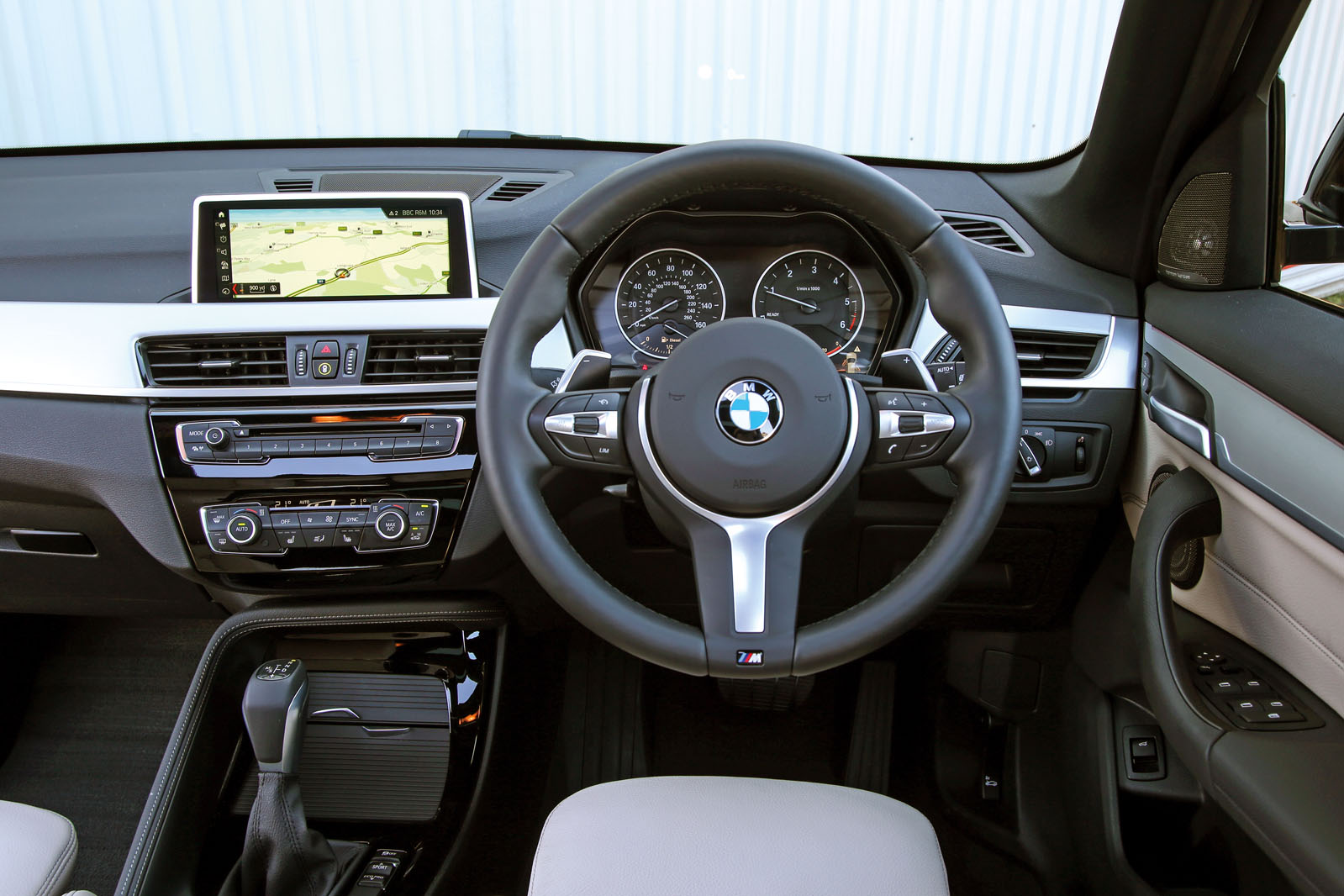
In this company, the XC40’s distinguishing lures are many, and many of them so central to the classic mission statement of a road-going 4x4 that they’ll likely make the Volvo tough to beat. There’s fresh, bold, charismatic exterior design; an imaginative, inviting, expensive-feeling interior that feels as good as it looks; a driving position that’s no half-measure but places you up in the gods, and allows you to see clean over the top of the saloons and superminis you’re in among; an equipment list full of luxury-level infotainment and convenience features; a genuine luxury level of low-speed ride comfort and an unmistakable air of SUV-typical invincibility to the driving experience.
Finally, welcome the surprise package: the outside bet. Except that default-choice driver’s cars like the BMW X1 xDrive25d M Sport usually start as odds-on favourites in Autocar group tests. Why not here? Because the X1 is at once small, low and narrow by compact SUV standards. It may therefore struggle to produce the kind of comfort and space that may be required of it.
Also because its unusually taut suspension, responsive handling, close body control and general driver-centric demeanour aren’t the dynamic characteristics you expect to find in a junior utility vehicle. Which isn’t to suggest a car with 228bhp, sub-7.0sec 0-62mph performance and the soul of a hot hatchback isn’t welcome in the diesel compact SUV segment; it’s a very welcome change of pace indeed. Welcome, but perhaps not as well-suited to the task it’s ultimately come to tackle as its opponents. We’ll see.
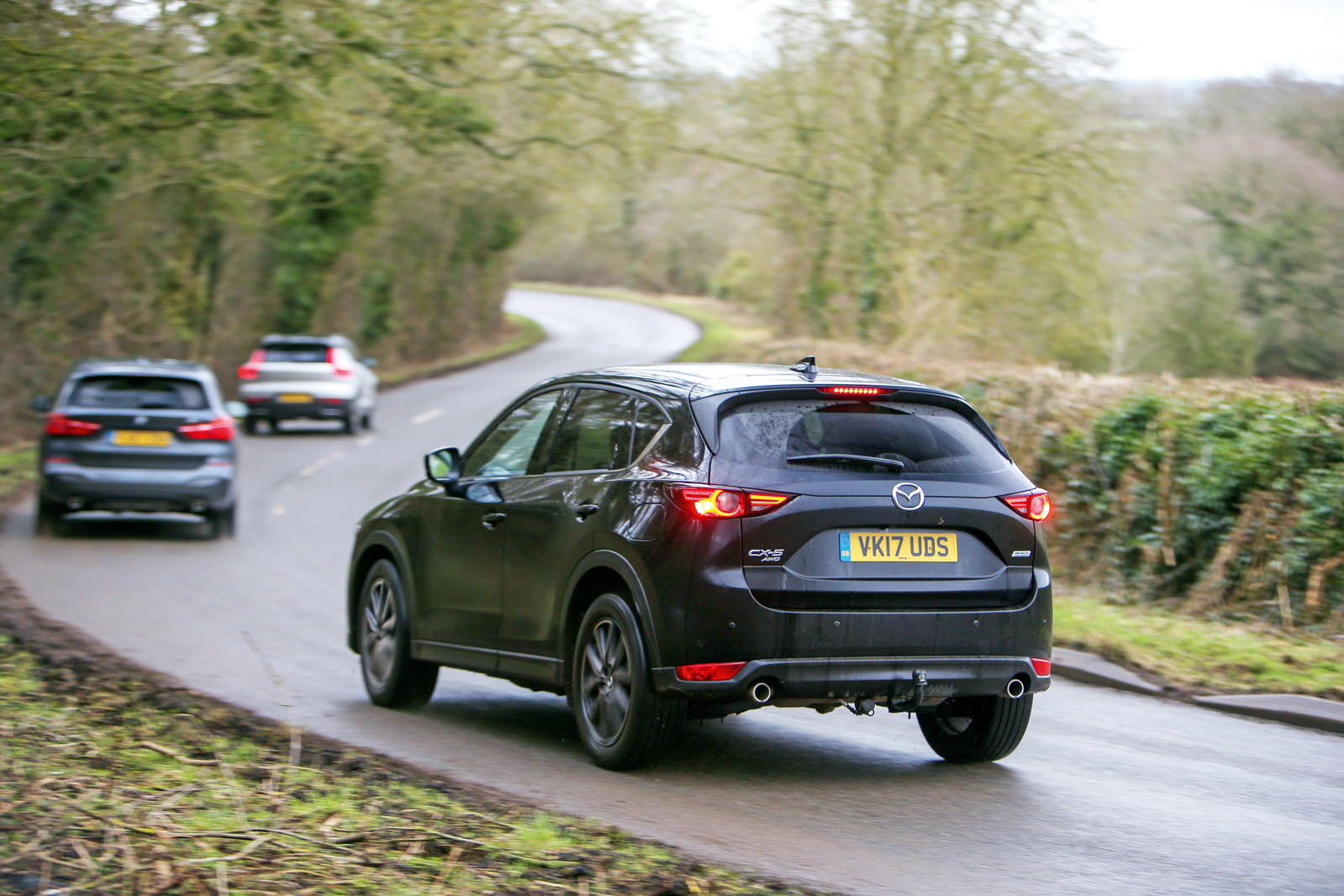
After the staccato repetition of whittling down seven cars to just three, the chance to spend longer at the wheel of the chosen few, and to stretch their legs on a road trip, feels like a more familiar comparison test mould to me. We leave our test base in south-west London behind and set out on a 250-mile round trip to the Midlands to find quiet roads for photos, and to pose a varied challenge for our protagonists. A bit of motorway, plenty of A-road, a good dash of B-road – and most of it still shrouded in the murky dank grey of British winter.
So which of these interiors would you most like to hide away from the conditions inside? Though the answer depends a little bit on where exactly within the car you’ll be sitting, it’s the XC40 with the clear lead. It’s the Volvo with the highest hip point and loftiest vantage point, the comfiest driver’s seat and the ‘nicest’, most enveloping and most luxurious interior ambience.
Where the BMW’s seats are impressively adjustable, they’re narrow and can be a touch uncomfortable at times. The Mazda’s seats are softer and wider, but aren’t quite as well-shaped as the Volvo’s and aren’t as comfy after prolonged acquaintance. The Volvo’s are the sort of seats you could spend hours in every day without complaint.
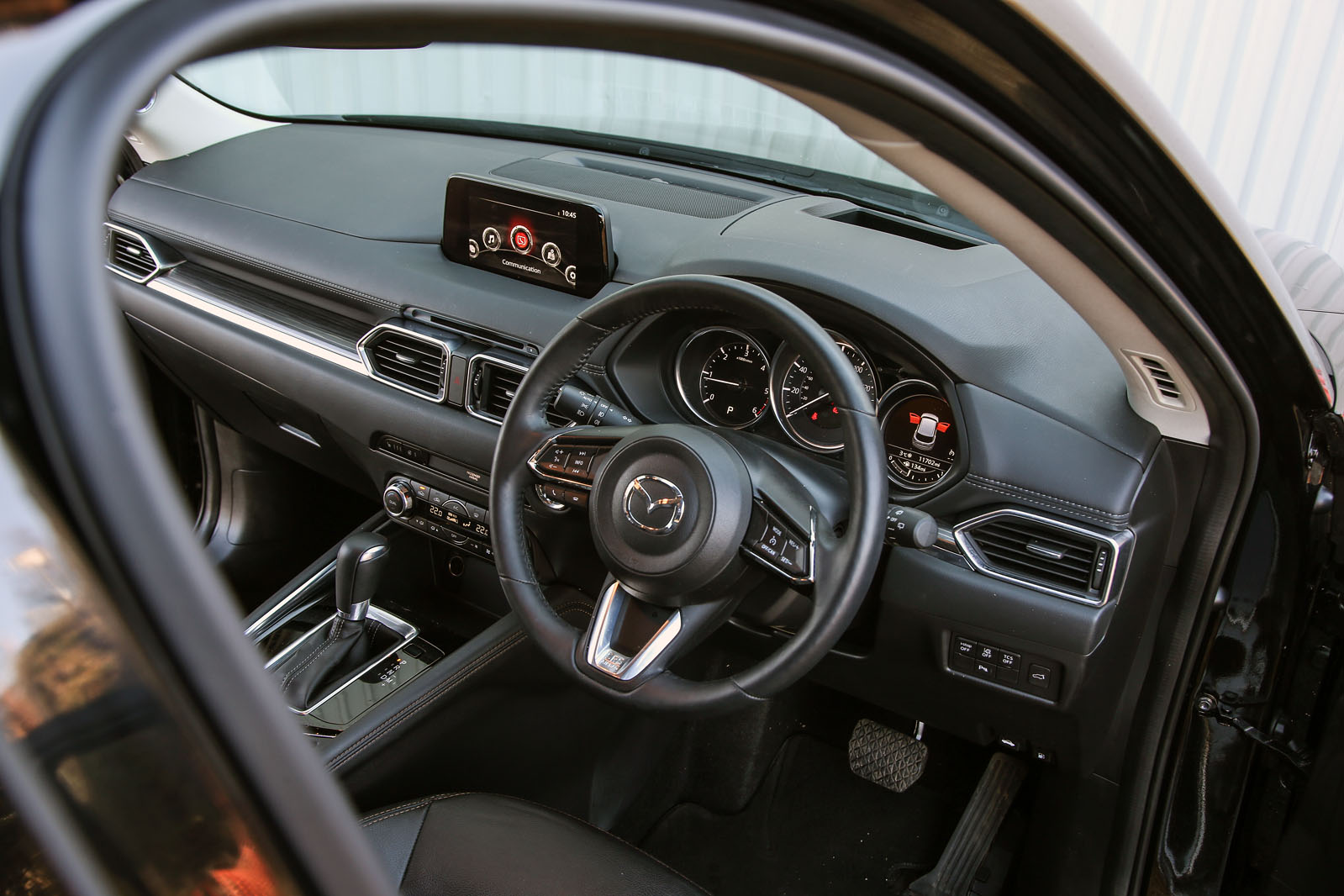
The Mazda claws some credit back by beating the Volvo on second-row passenger space and has superior boot space too. The BMW, meanwhile, surrenders a bit by failing to go beyond what a normal family hatchback offers on spacious feel: the X1’s interior feels narrow compared with the other two and seats you at closer quarters to your front passenger than you expect it will. No doubt, then, for ‘big SUV’ spaciousness and comfort, the XC40 is king.
And for material richness, quality, technological sophistication and luxuriousness, it’s out in front too. You might expect the battle to be between the premium brands here – between Munich and Gothenburg, with little old Hiroshima cast adrift. But it’s a credit to Mazda that the comparison’s so even. The CX-5’s fixtures and mouldings are robust and substantial. Its column stalks, window switches and heater controls have much the same tactile heft as the X1’s. It has leathers as soft and attentively stitched as the BMW’s also, and almost as many classy decorative touches.
Granted, there’s more of a gulf between the power and functionality of the infotainment systems in the Mazda and the cars it’s up against here; there’s no in-car Wi-Fi or even smartphone mirroring in the CX-5, where the Volvo and BMW offer both and then some. Still, when you stand back and consider them in the round, you could easily make a convincing case to take the CX-5 instead of the X1 as a place to simply spend time; much as you couldn’t make that case stick against the Volvo, however you went about it.
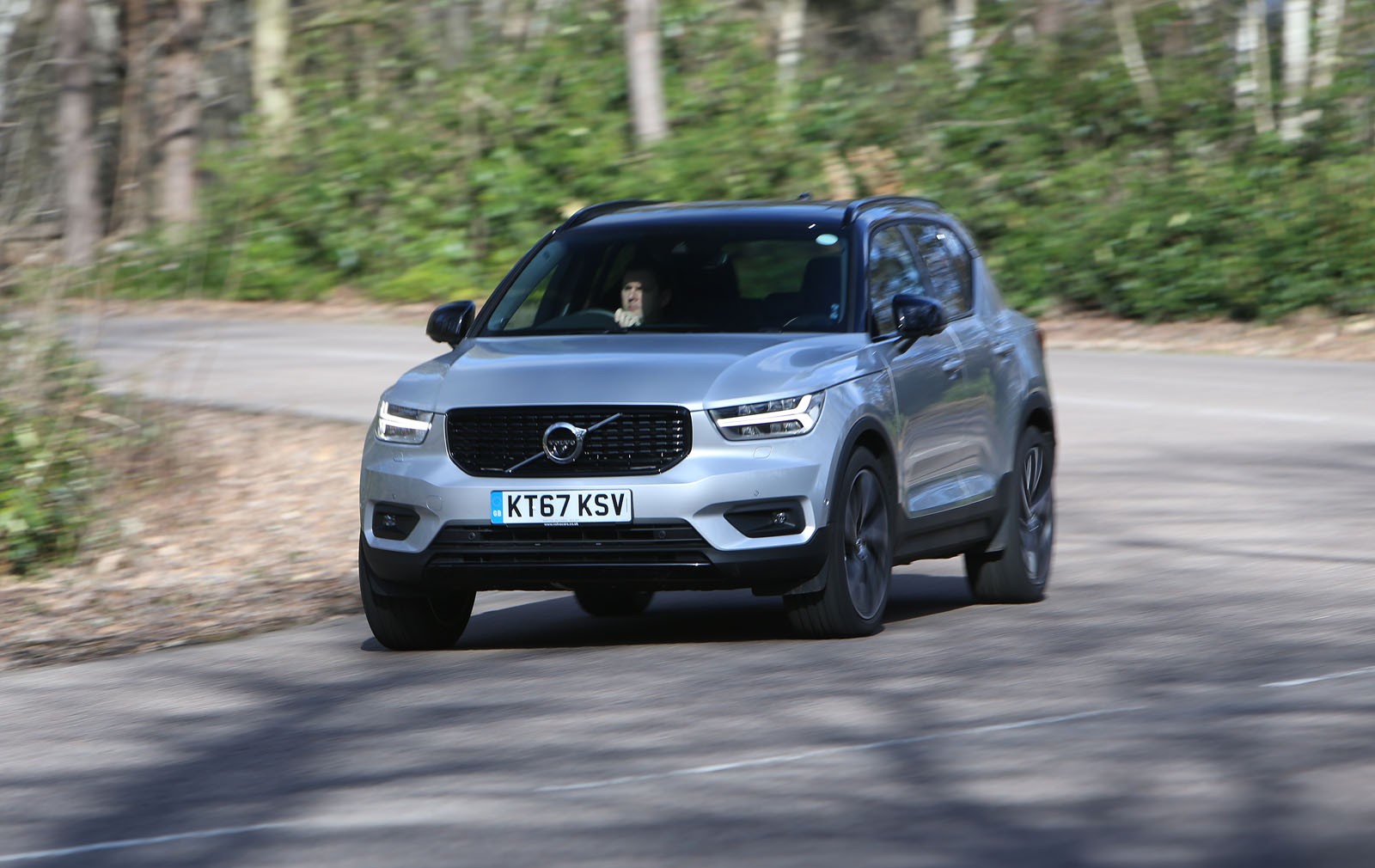
On to the driving experiences, then. How will these powertrains rebalance this three-way tussle? Well, the strongest, most elastic and most generally impressive belongs to the BMW: it’s a four-cylinder diesel that revs beyond 3500rpm with a freedom matched by almost no other engine of its kind. Neither its refinement nor its real-world fuel economy are compromised relative to its rivals, which seems equally remarkable.
And it’s hooked up to an eight-speed automatic gearbox that works as well at pootling speeds as it does at full throttle.
You can’t help but be hugely impressed by the X1’s powertrain. But does a compact SUV really need such strength? It seems churlish in the extreme to even ask. But when so few of the X1’s rivals bother with diesels with more than 190bhp, you have to wonder. The XC40 certainly doesn’t seem to be struggling by on just 187bhp; it has plenty of torque, but moreover the sort of progressive pedal response and easy drivability that put you instantly at ease – and that make you singularly unlikely to hurry. And the CX-5? It could do with another 20bhp or so, since we’re being greedy, if only because the chassis is easily good enough to sustain the added performance.
From a ride and handling perspective, the X1 and XC40 are poles apart. The BMW’s adaptively damped sport suspension takes the rough edges off the road surface underneath its wheels but wants to keep you constantly in touch with its topography. It handles like a big hatchback, really – and a good one too. It grips hard; turns fast; doesn’t roll; doesn’t overwork its front tyres; maintains a balanced attitude; feels agile and ever ready to carry more speed.
It’s comfyish, but no more so than a sporty hatchback; a bit noisy in the ride department, actually, on account of BMW’s standard-fit M Sport-spec run-flat tyres. And don’t worry, you haven’t slipped into a parallel group test universe: this is a compact SUV, sort of. A fact that will either have you scratching your head or asking where to sign.
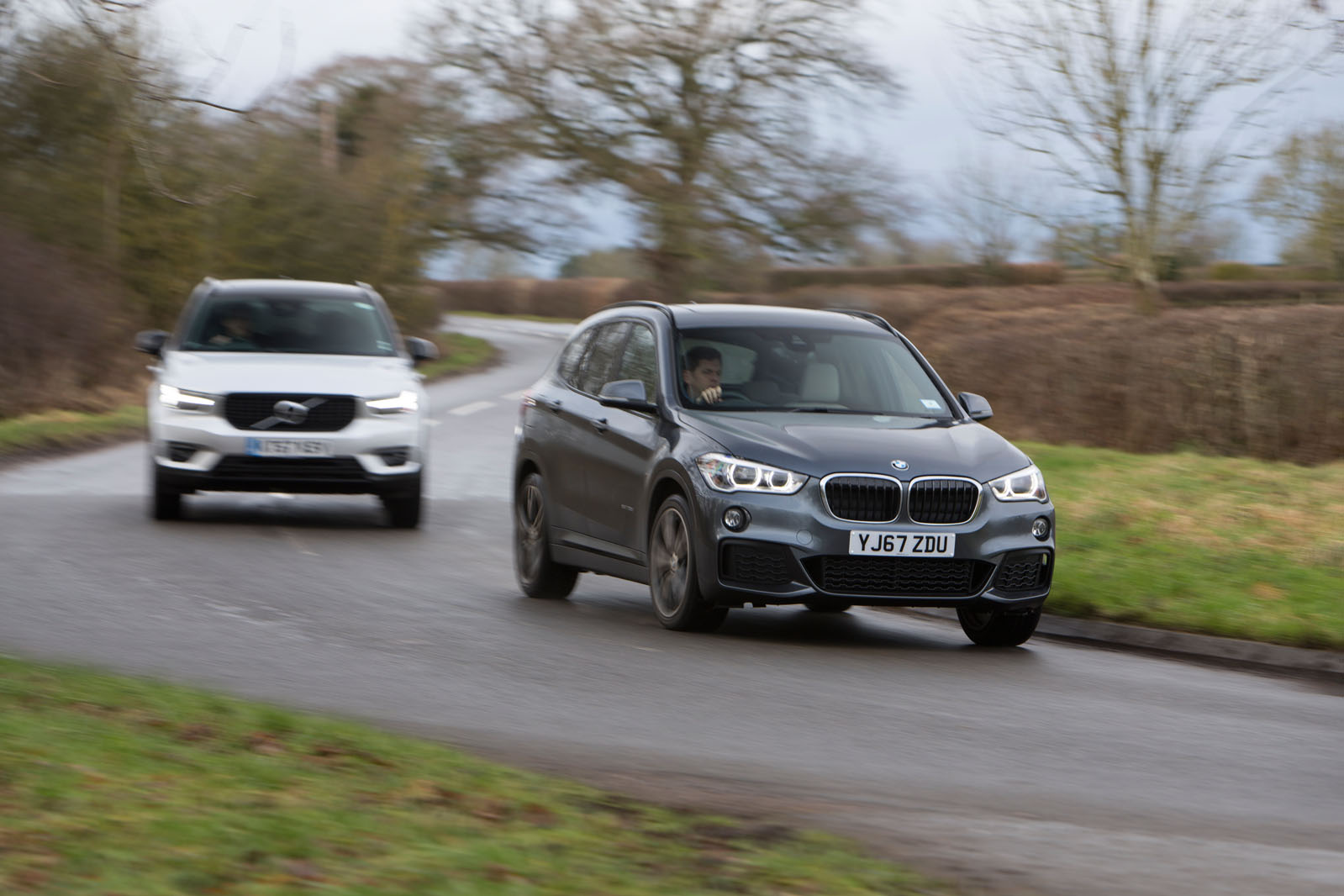
The CX-5 is a more normal, typical-feeling SUV to drive. Its steering is perfectly weighted and paced as to feel natural and intuitive in your hands, and its suspension marries the need to keep everyone comfy with the desire to keep the driving experience interesting very cleverly indeed. Better than the Tiguan did it, better than the Ford did it – bravo to Mazda. All except, that is, when the bumps turn sharp-edged, when the wheels start to crash and hop over them a bit. Shame. And then comes the Volvo: a car, like so many of its Swedish brethren, that’s such a straightforward pragmatist on the road you can’t help embracing it.
The XC40’s ride is soft; its suspension keeps scuffs and troughs in the road at a very discreet distance, so long as you’re in tune with its natural stride. And it’s not hard to be in tune with it, by the way. Stray one mile per hour above its comfortable B-road cruising speed and the XC40 lets you know straight away – with gently gathering vertical body movement, a subtle suggestion of low-frequency head-toss, or a recurrent fidget of secondary ride fuss over bumps that wouldn’t otherwise bother it. “Slow down,” it’s saying. “Rushing’s not for the likes of us.”
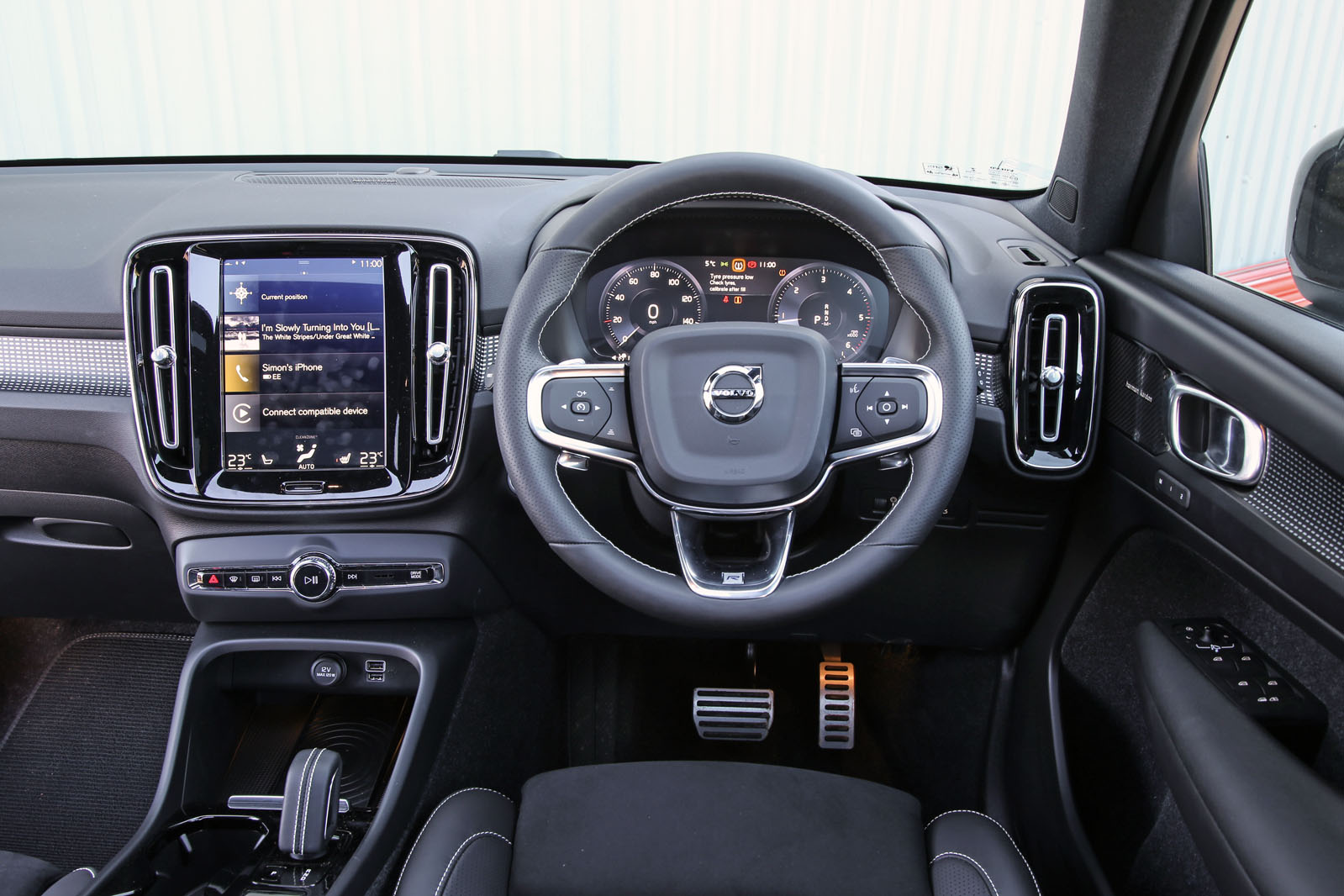
To some, particularly the keen drivers who make up much of the readership of Autocar, I can imagine a dynamic character like that may seem a bit of a turn-off. But then I’m a keen driver. All other things being equal, I’ll always take the better-handling option. And yet I’d take an XC40 over an X1, a CX-5 or any of the others at least partly because of the way it rides and handles. The XC40 is so deliciously grown-up, mellow, refined and relaxing as to boss the argument; to own it, really. Because, in all seriousness, how else would you really want a premium SUV to be?
The coarseness of the BMW’s run-flat-roar-ride and its failure to distance itself from hatchback- level spaciousness means it must finish third here. The greater value, practicality and dynamic roundedness of the Mazda secures a very honourable second. But the sheer dynamic fitness-for-purpose of the Volvo is the finishing touch that makes it a hugely deserving winner – and, I would have thought, one of 2018’s hottest automotive properties.
3rd BMW X1 xDrive25d M Sport - Fiery diesel a bit of a square peg in a round hole – but a welcome one. Short on SUV spaciousness, refinement
2nd Mazda CX-5 2.2d 175 4WD Auto Sport Nav - Beats the premium brands and shows where the value really lies. Practical, classy, torquey and rounded to drive
1st Volvo XC40 D4 AWD Auto First Edition - Has luxury, desirability, comfort and charm to spare. Superbly fit for purpose, and singularly refreshing with it
But what about the…?
Jaguar E-Pace - Available with a 237bhp diesel engine that might just have given the X1 a run for its money – albeit at a price that would also have made most other things look cheap. We’ll never know because we’re still waiting for our first loan car, which is due next month. A full road test will be forthcoming.
RANGE ROVER EVOQUE - Undoubtedly a loss to this exercise. “I’m afraid we don’t have a diesel to lend you,” Land Rover claimed. It’s now more than six years old, but that didn’t stop Audi fronting up a Q3. Like the Jag, it would have been pricey – but a proper luxury product too.
JEEP COMPASS - A curveball we’d have liked to have thrown in but were denied the opportunity. The new Compass was launched to the press last year but wasn’t quite available to test as these words were written. Unlikely, perhaps, to have landed much on the favourites – but a £36k Trailhawk has its appeal.
HONDA CR-V - Long-lived old faithful would have stretched the test’s defining bounds of respectability on compactness, and its 1.6-litre diesel might have come up short on torque. That said, its roundedness and usability would likely have made sure it avoided the wooden spoon.
PEUGEOT 3008 - If we would have known that both the Kuga and Q3 would disappoint, either could have made way for this. The cleverly conjured premium-brand ambience would certainly have merited inclusion, although the jury’s still out on the driving experience.
Read more
Autocar's top 10 compact SUVs 2018
BMW X1 review
Volvo XC40 review
Ford Kuga review

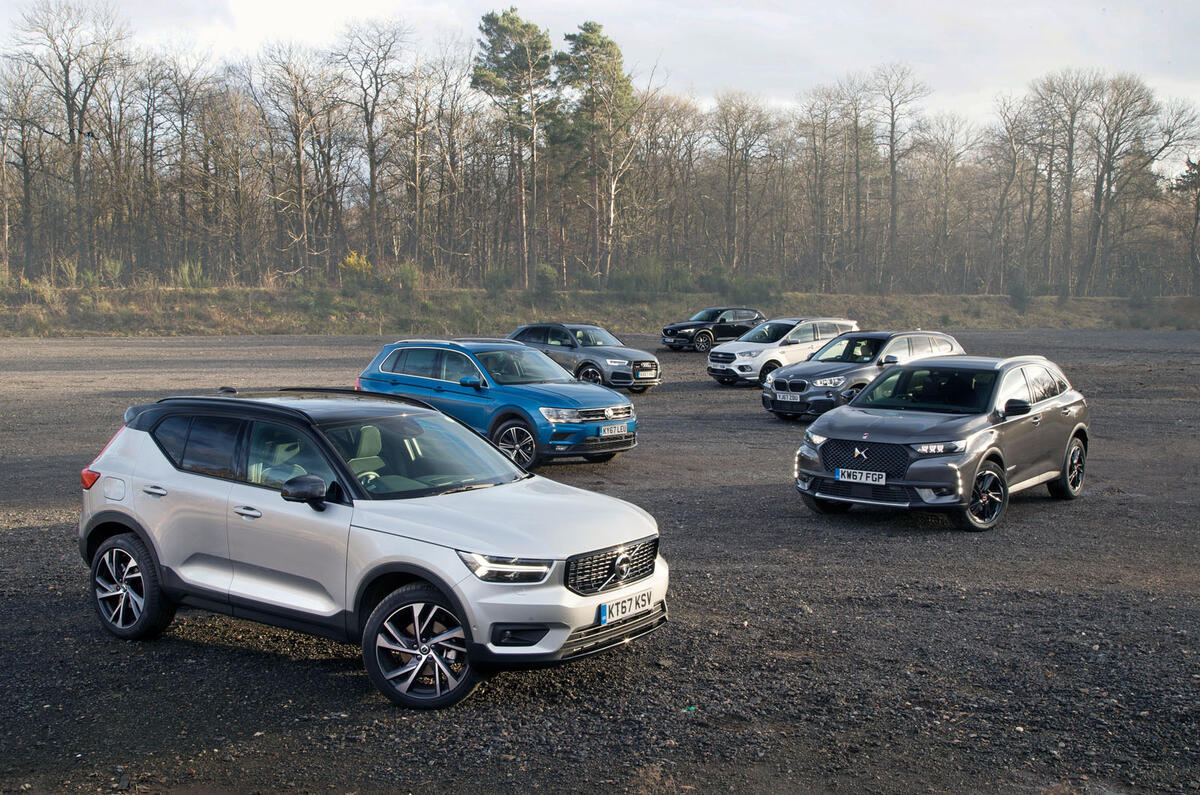
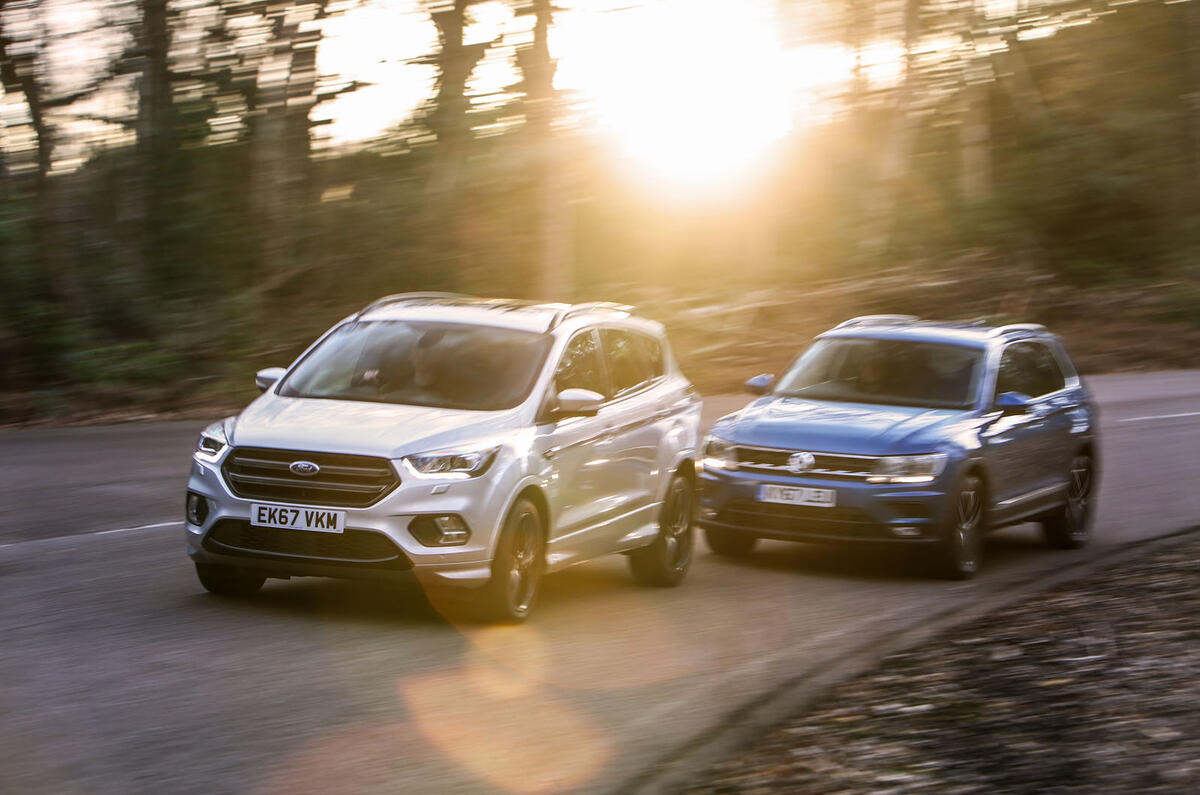
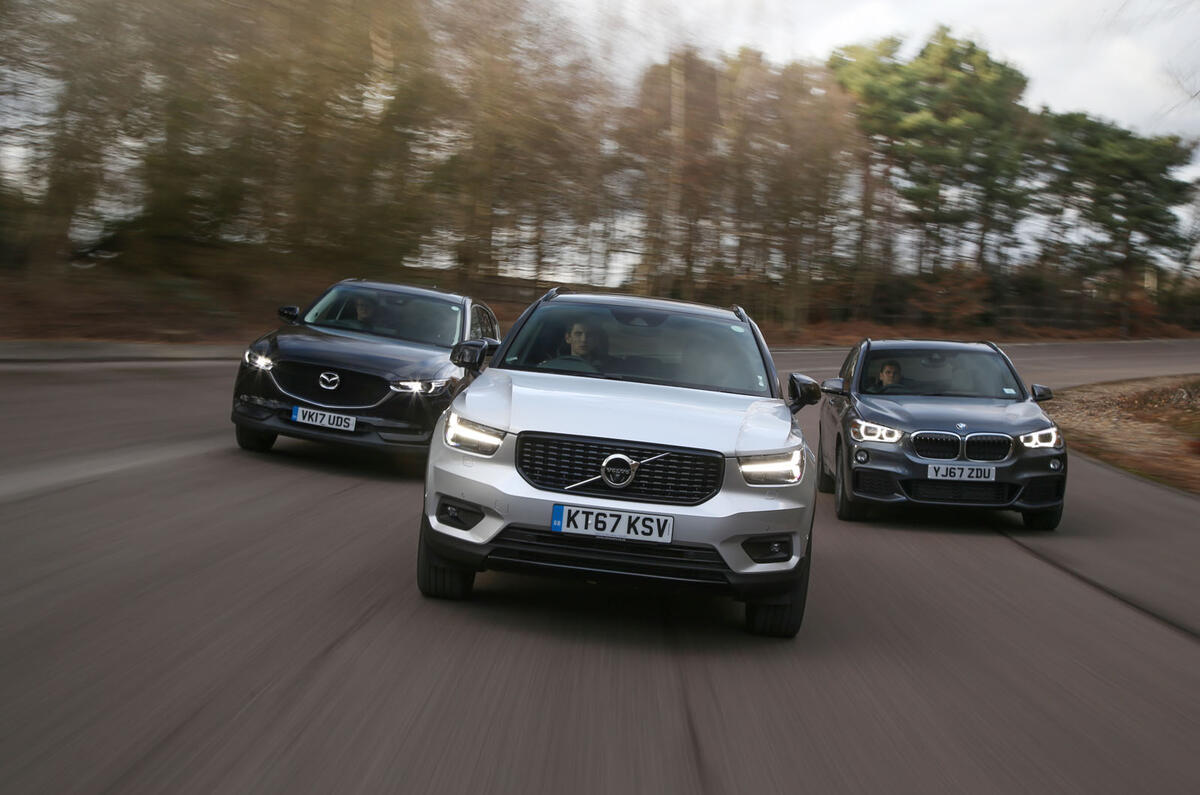
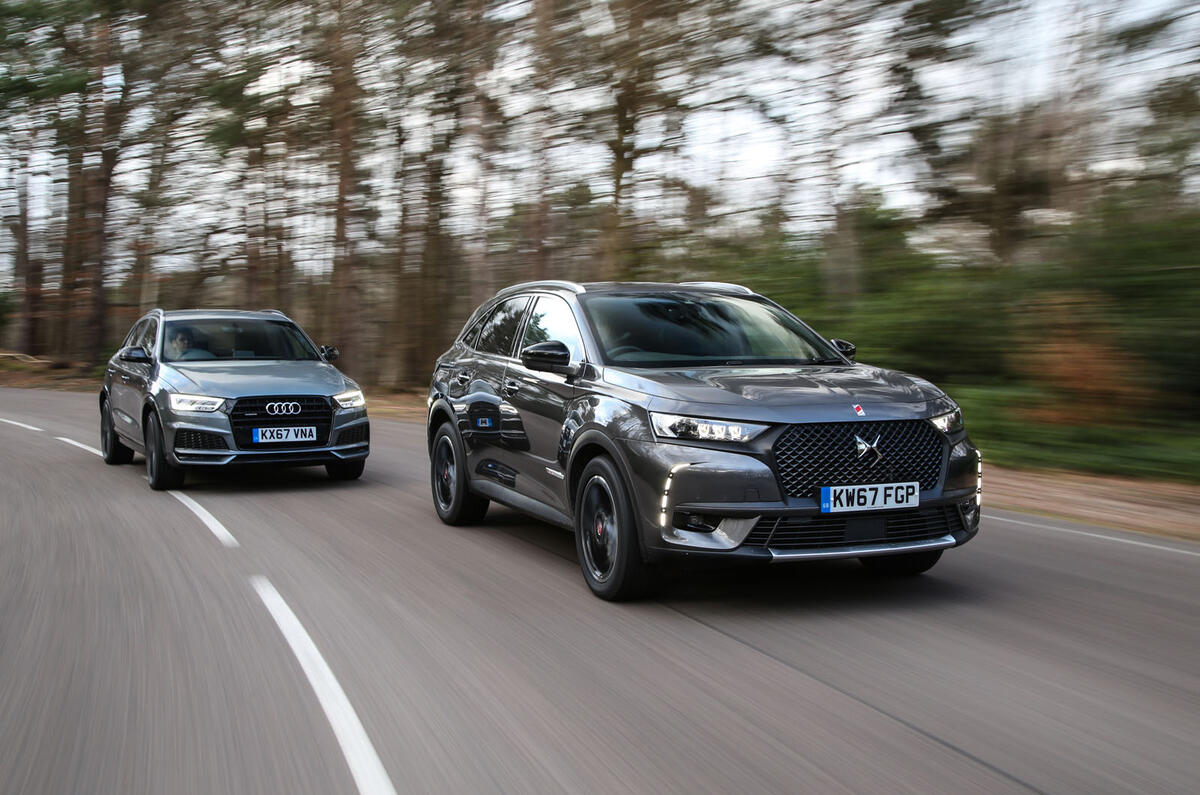
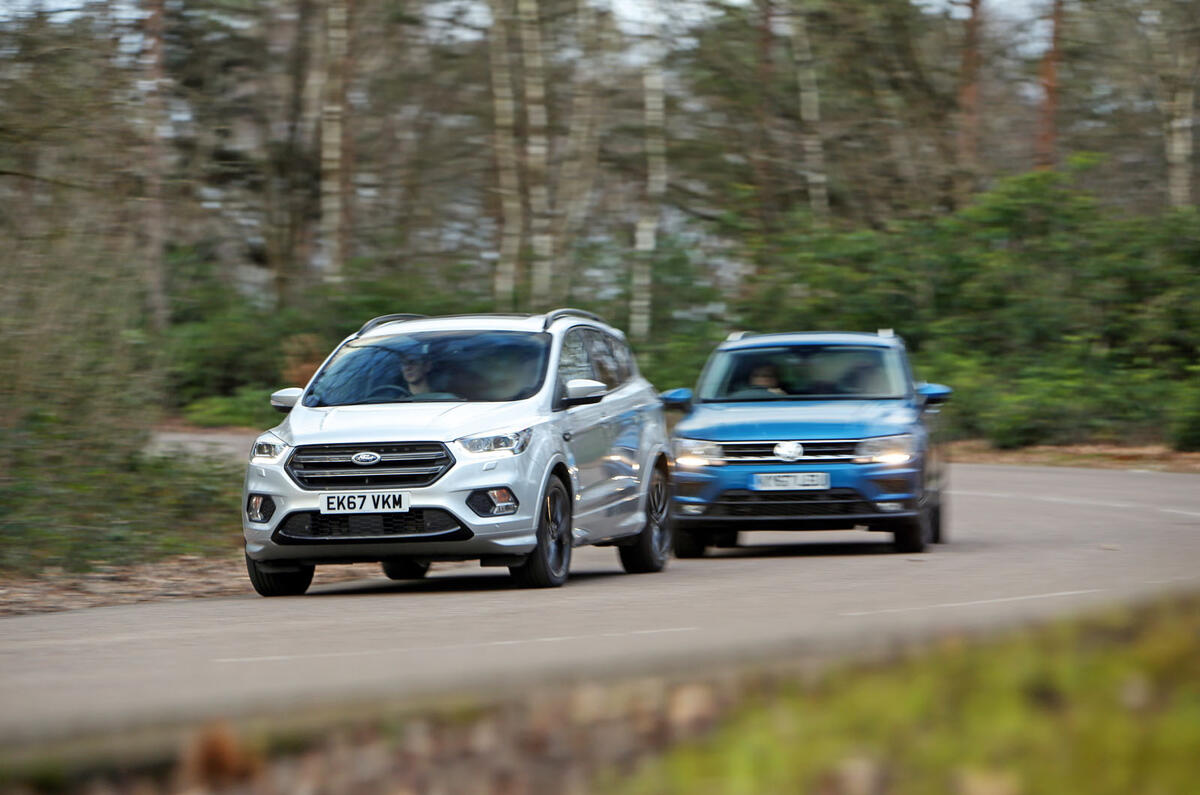
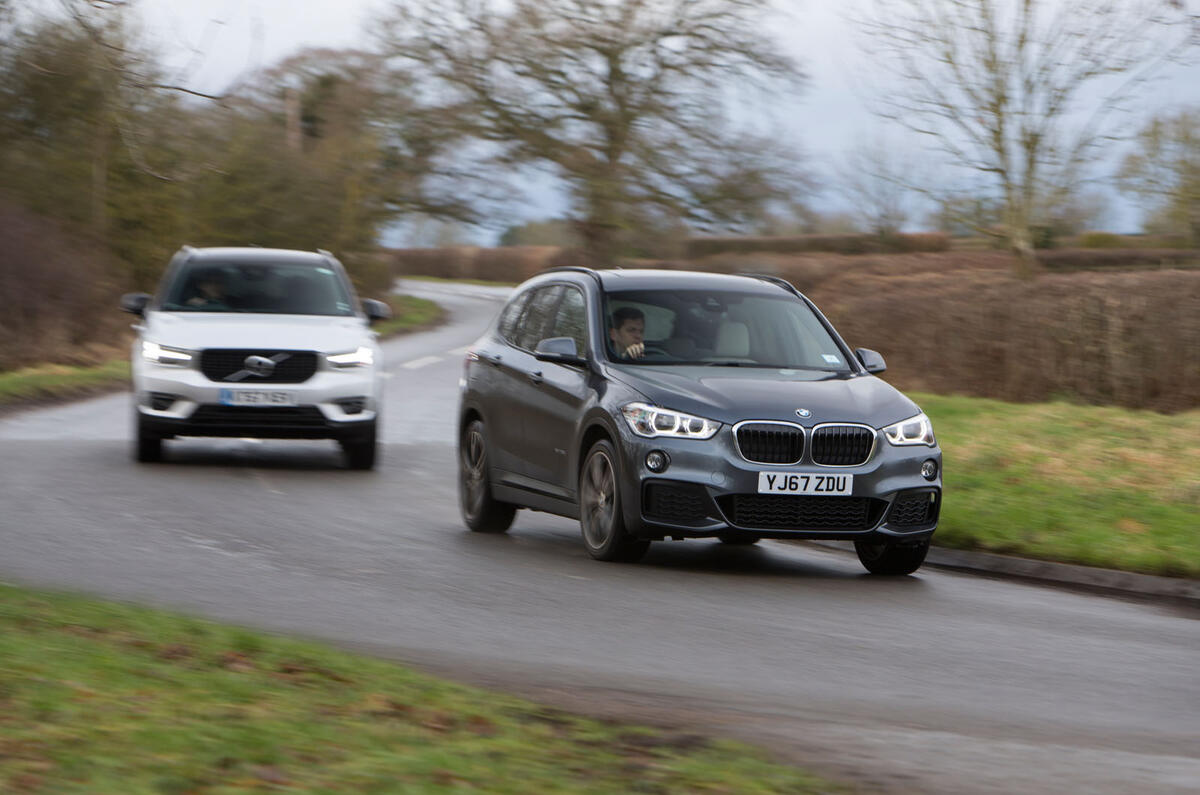

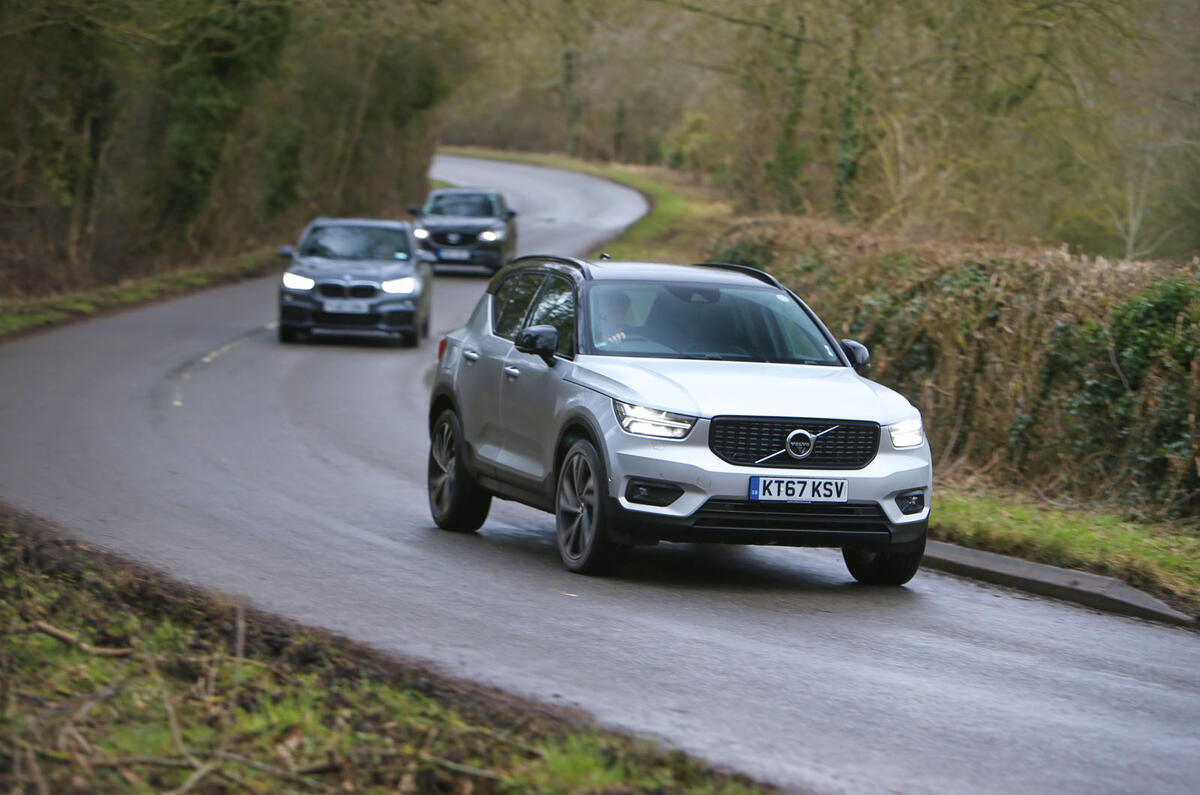
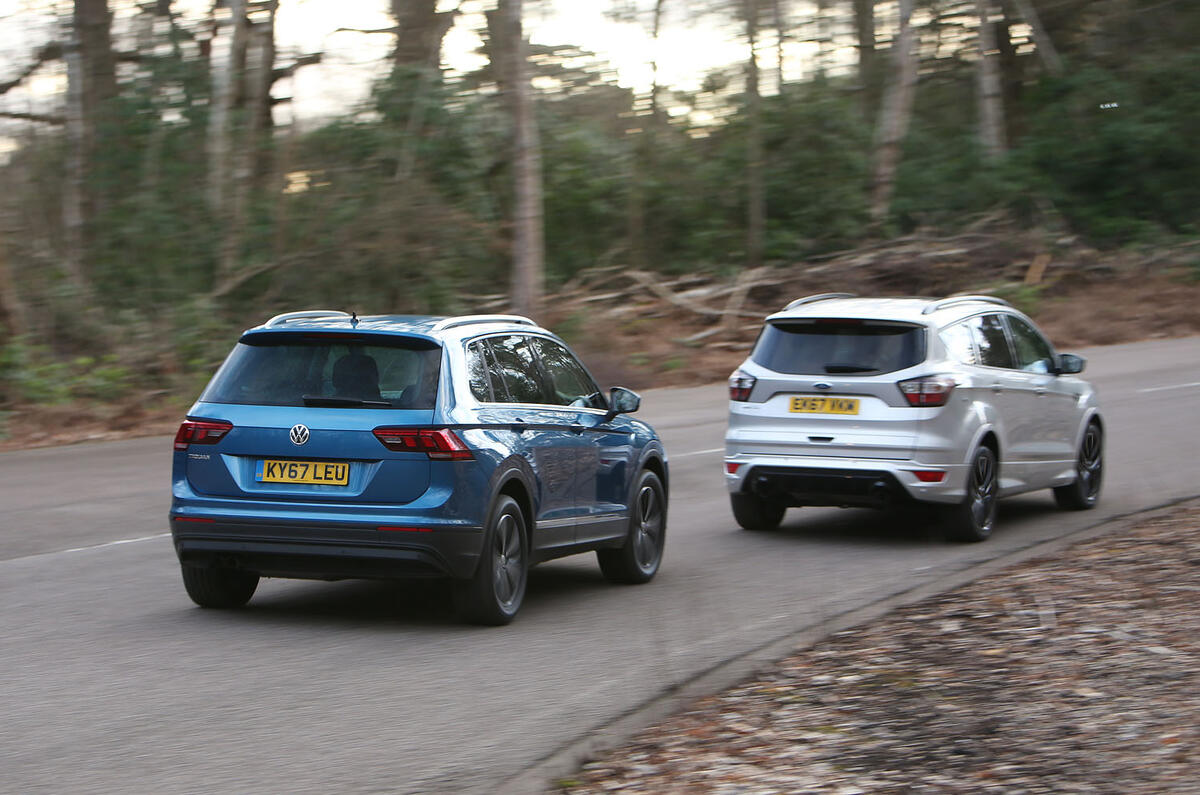
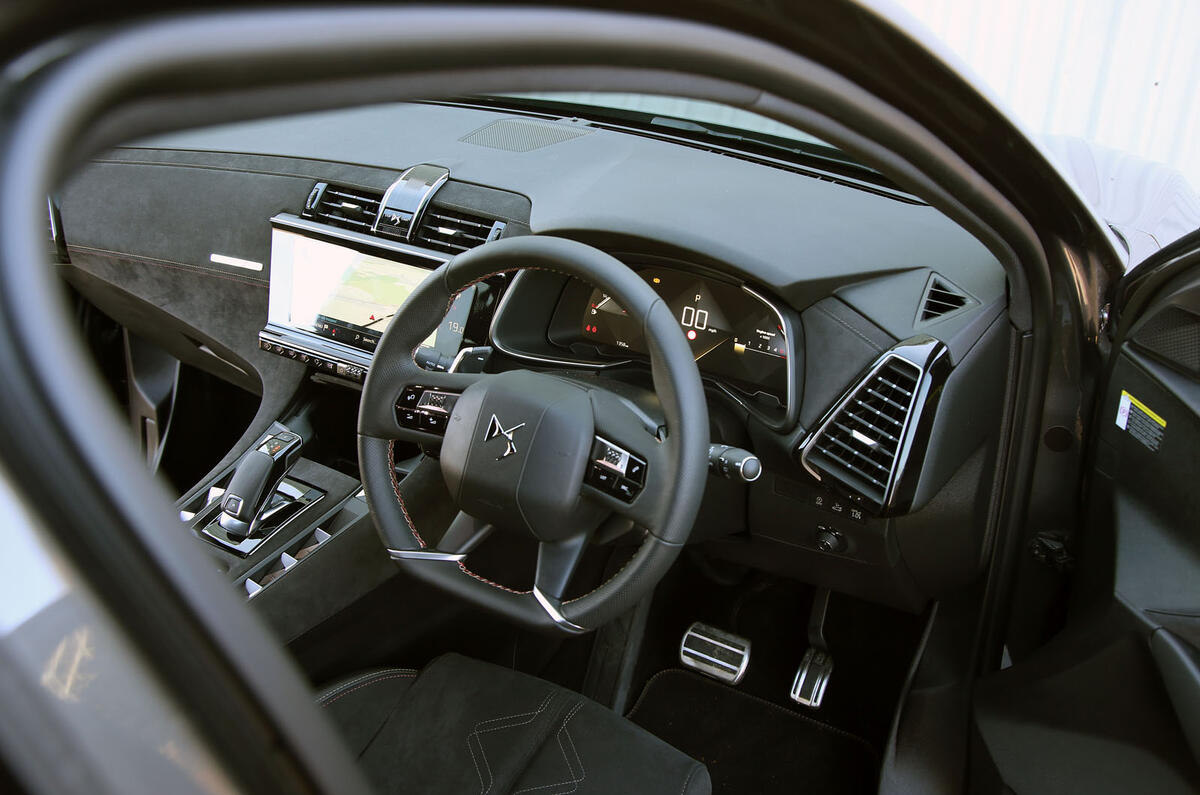
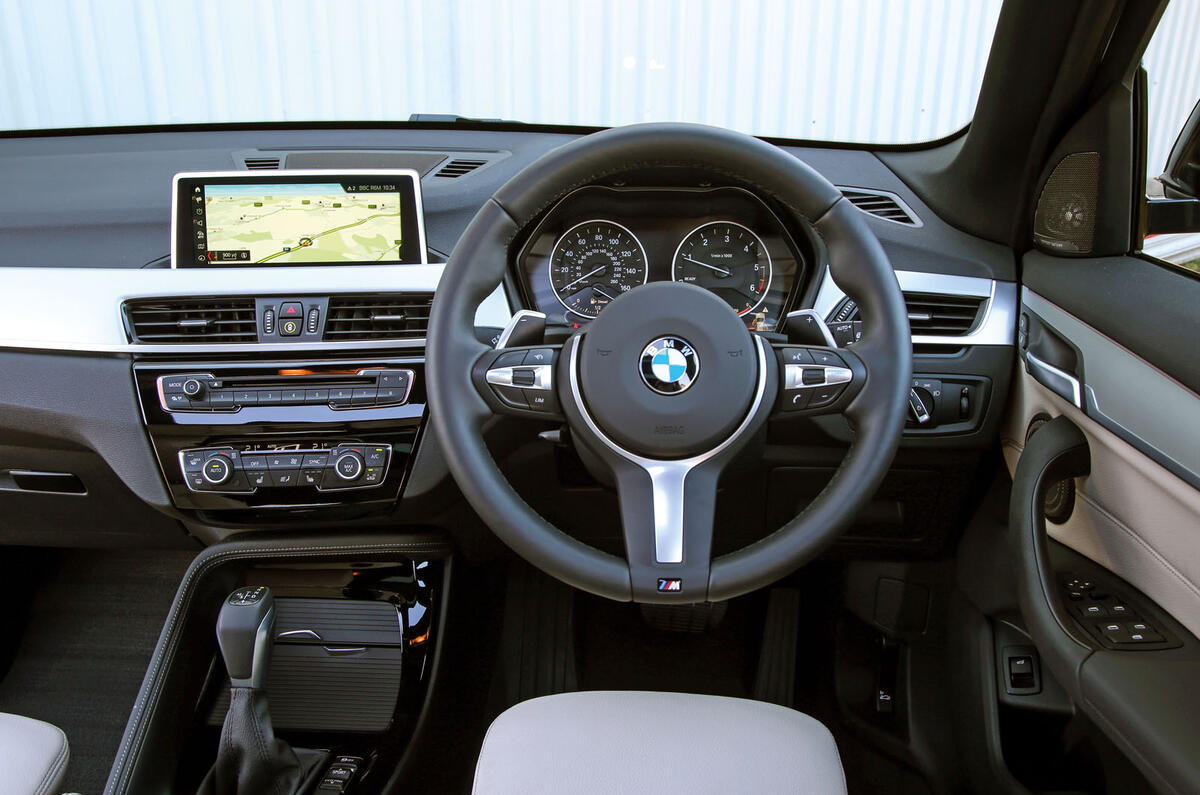
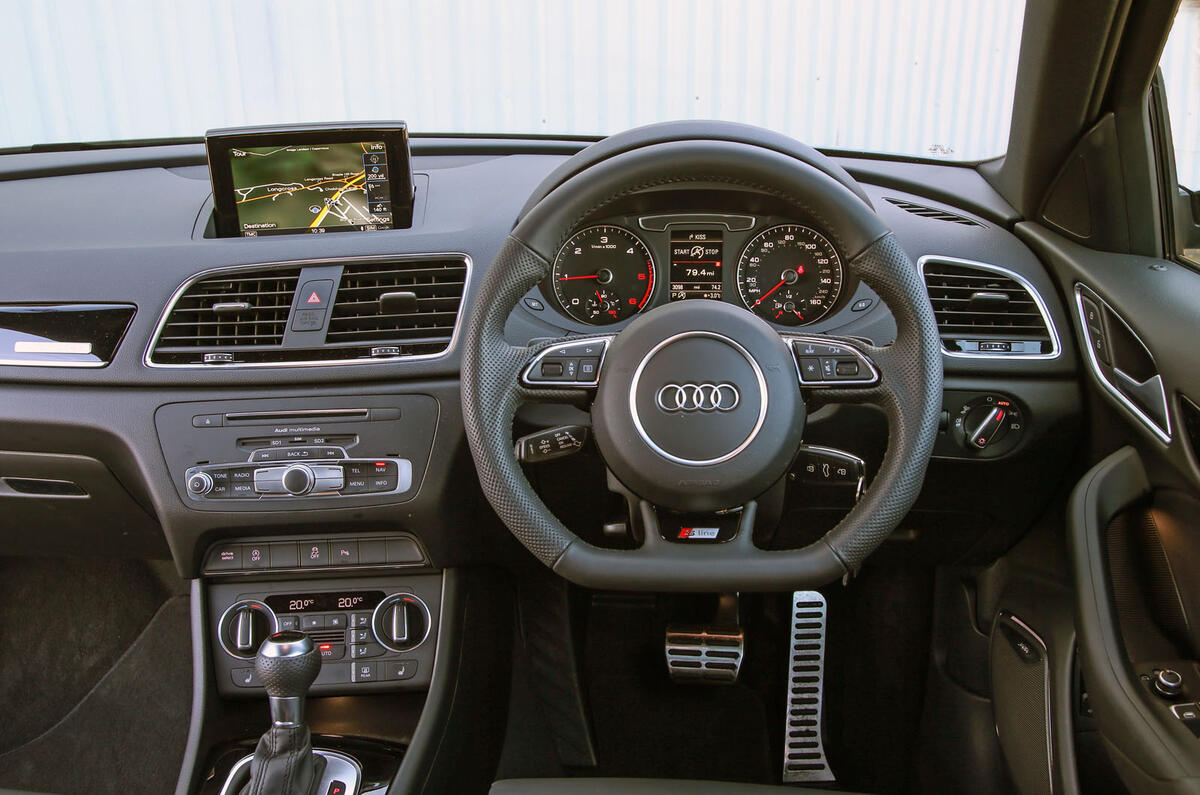
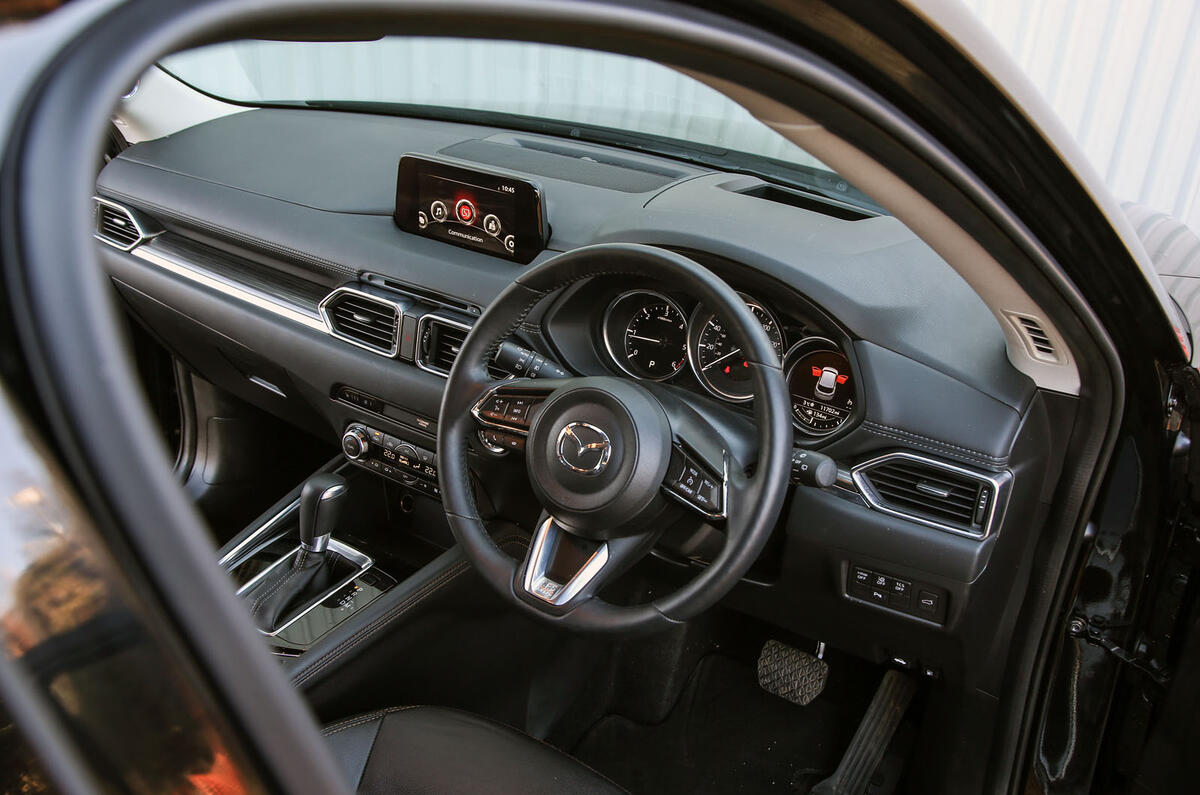
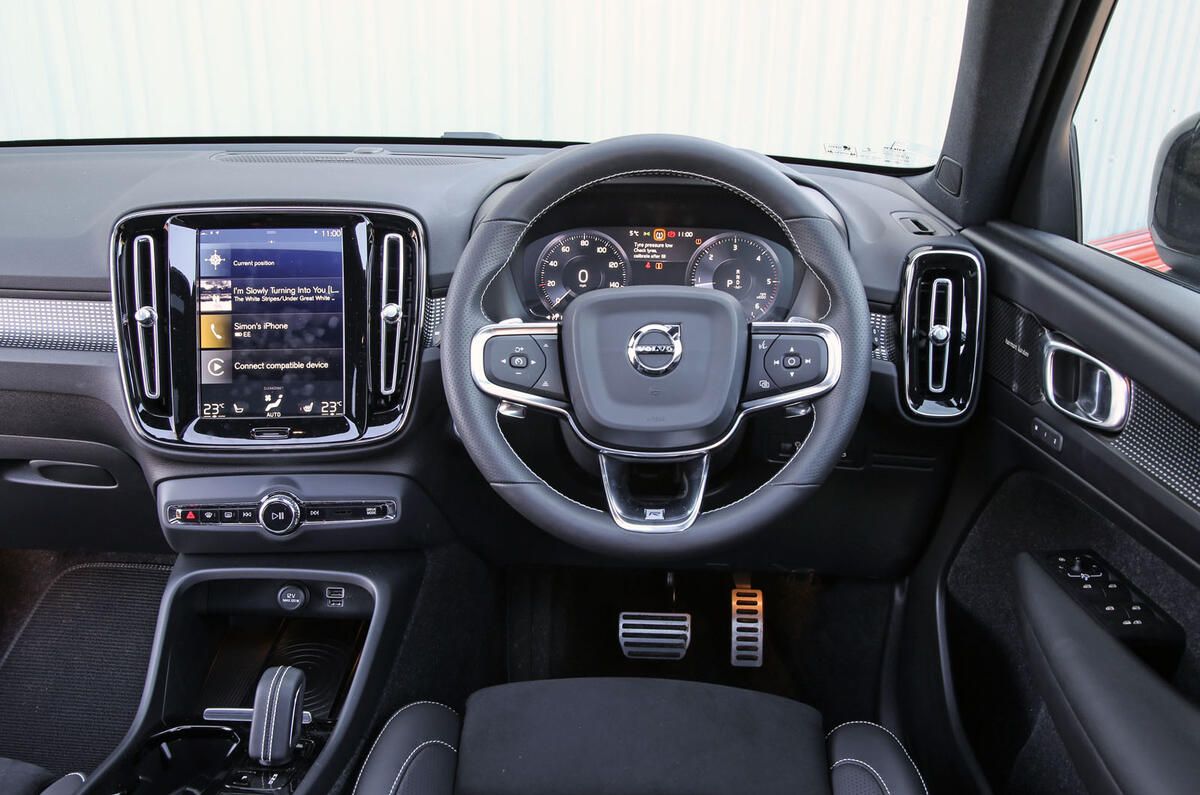
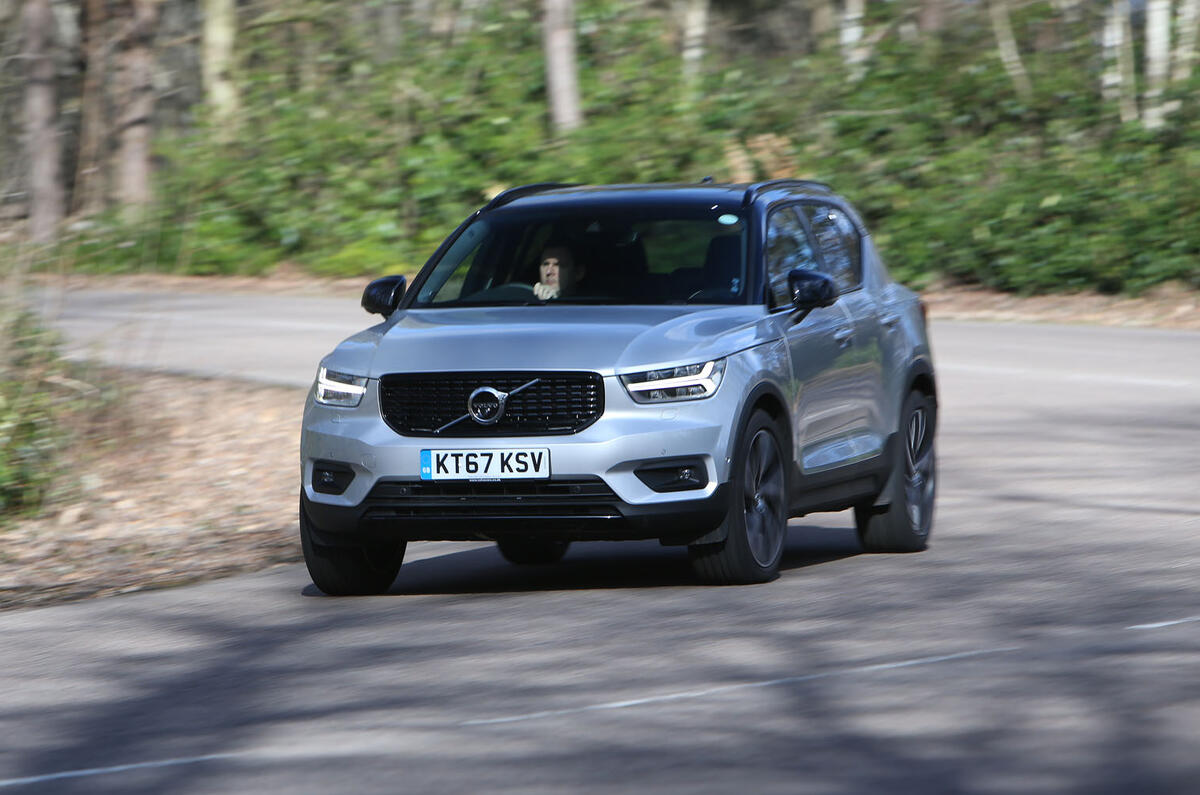
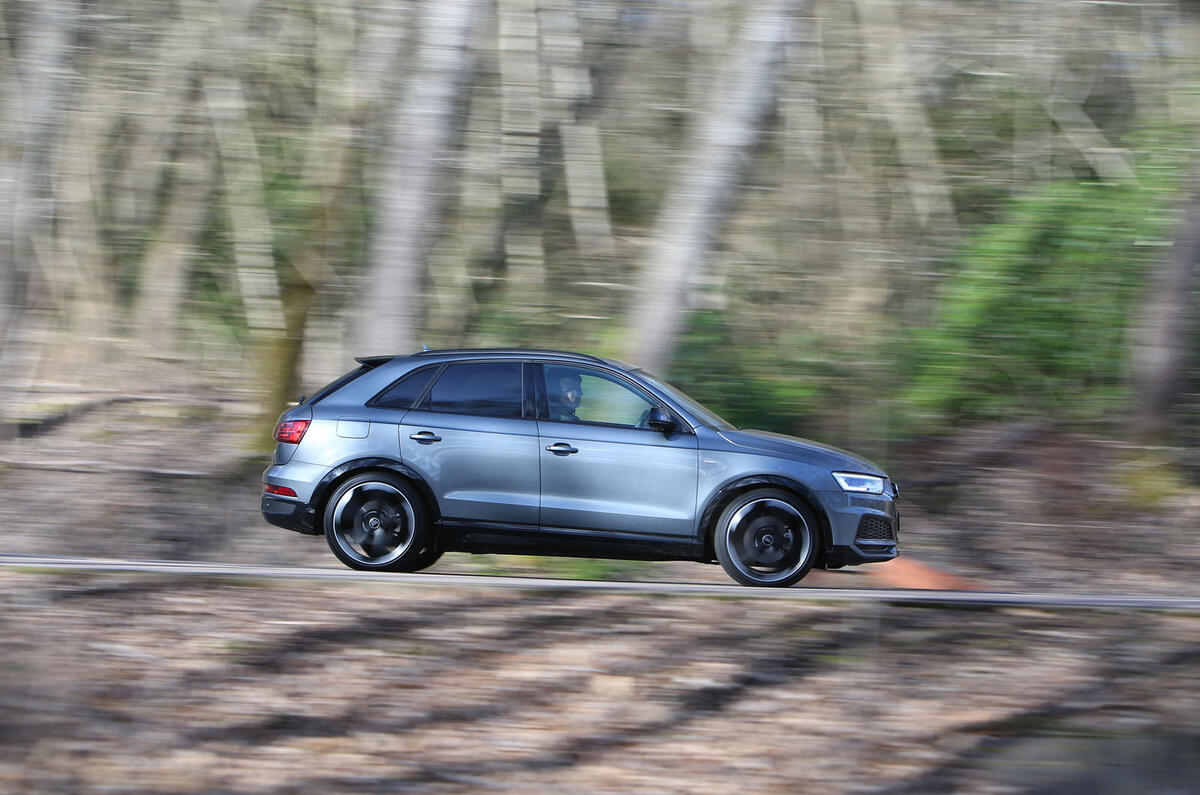
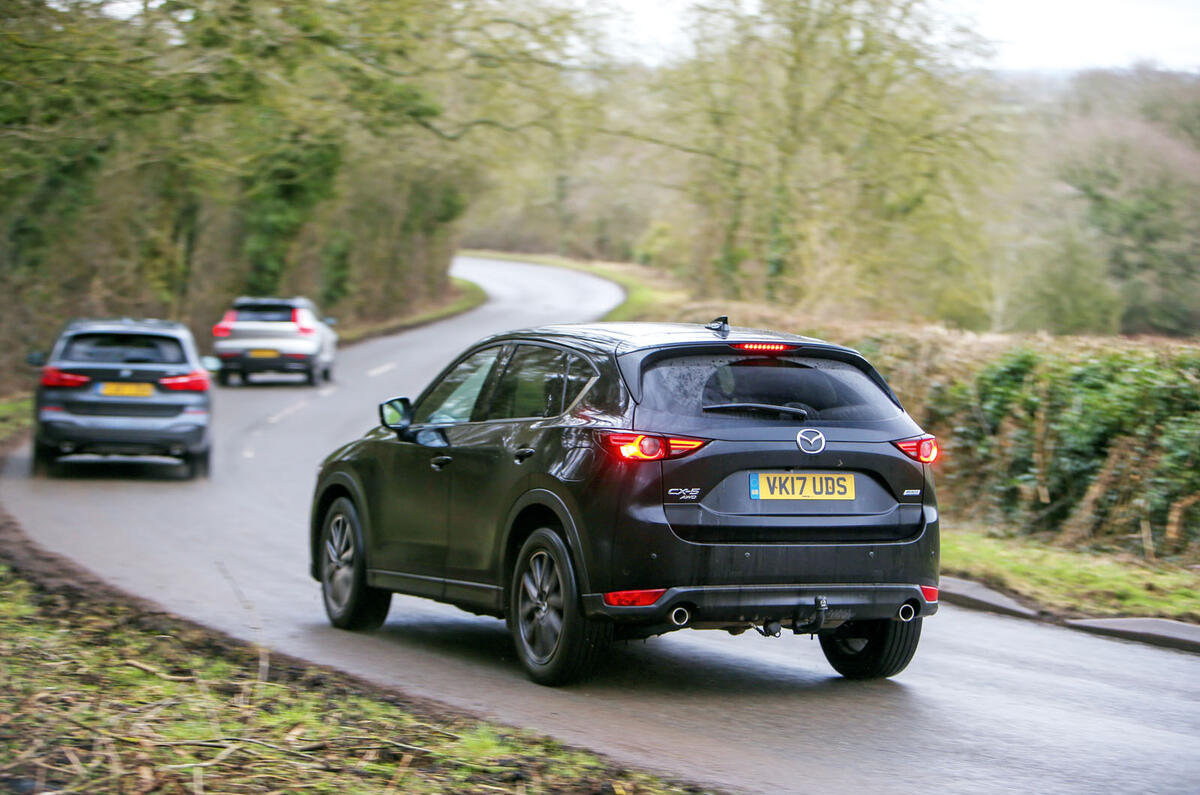
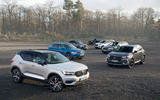
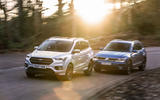
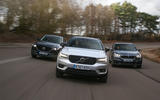
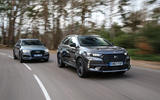
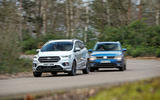
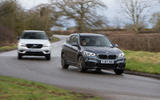
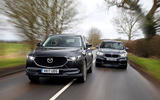
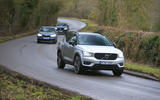
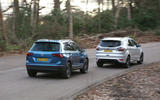
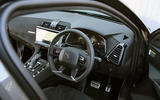
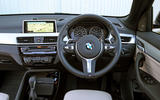
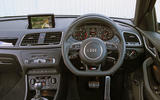
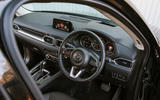
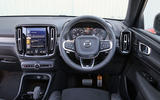
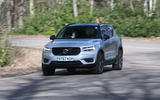
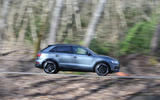
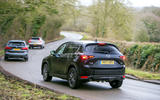






Join the debate
Add your comment
Q3
I own a Q3 petrol model and must say that much of what the reviewers say is true. On the positive side it is well built and has proved reliable so far. It is no fun to drive though. It needs speed sensitive power steering at the very least. There isn't much space in the back for adults. In its defence I'd say that like all Audis it has good resale value and a revamped version is due out this summer. I probably wouldn't buy another SUV or crossover again.
My winner in this test
Mazda CX-5 2.2d some £5.5 cheaper than the £40K XC40. The test should have been smaller and more targeted, the size and price range is to big to be fair
I'd prefer a jacked up estate
These SUVs are all very well but most don't offer any real off road ability except for slightly raised ground clearance and occasionally AWD. Whilst I accept I'm likely to be a small minority, I much prefer cars like the Octavia Scout or Audi Allroad range. They offer all of the off road ability of these SUVs but much less bulk and in some cases better practicality.
As for which SUVs compete with which, it used to be that cars fitted within a very clear class, such as superminis or family saloons, think Fiesta and Polo or Cavalier and Sierra, but this categorisation doesn't work so well for SUVs. There is such a broad range and many seems to overlap different groupings.
Will86 wrote:
I agree, we always had an estate/wagon but recently switched to an SUV. We don't need off capability but we do need all wheel drive, or it's very helpful for us. One other reason we switched is that we found an SUV less tiring on long drives, particularly over 1000+km. No real explanation for this but that how it seems.